Houseplants love our homes! They originate from warm regions worldwide and have characteristics that make them thrive in household settings. Tropical, desert, and temperate plants all work well within the confines of the indoors. Some appreciate low light, while others need full sun conditions to survive the winter.
No matter where you live, there are houseplants you can propagate in November. Where you live may present challenges for winter plant propagation, however there are easy solutions to boost the multiplication process.
If you lack ample light in your home and want to grow desert species like aloe or burro’s tail, consider adding grow lights to your indoor garden. Grow lights mimic sunlight for plants and are excellent substitutes in northern regions with short winter days. Set the lights on a daily timer for at least eight hours on and sixteen hours off, and your indoor seedlings or cuttings will thrive throughout the cold months. For those plants that need indirect light, set them slightly to the side of the grow light.
Without grow lights, you’ll want to place the propagules or cuttings near a bright window with direct sunlight or bright indirect light. Each species is different, so we’ll include instructions on how to propagate 27 different houseplants this November!
Snake Plant
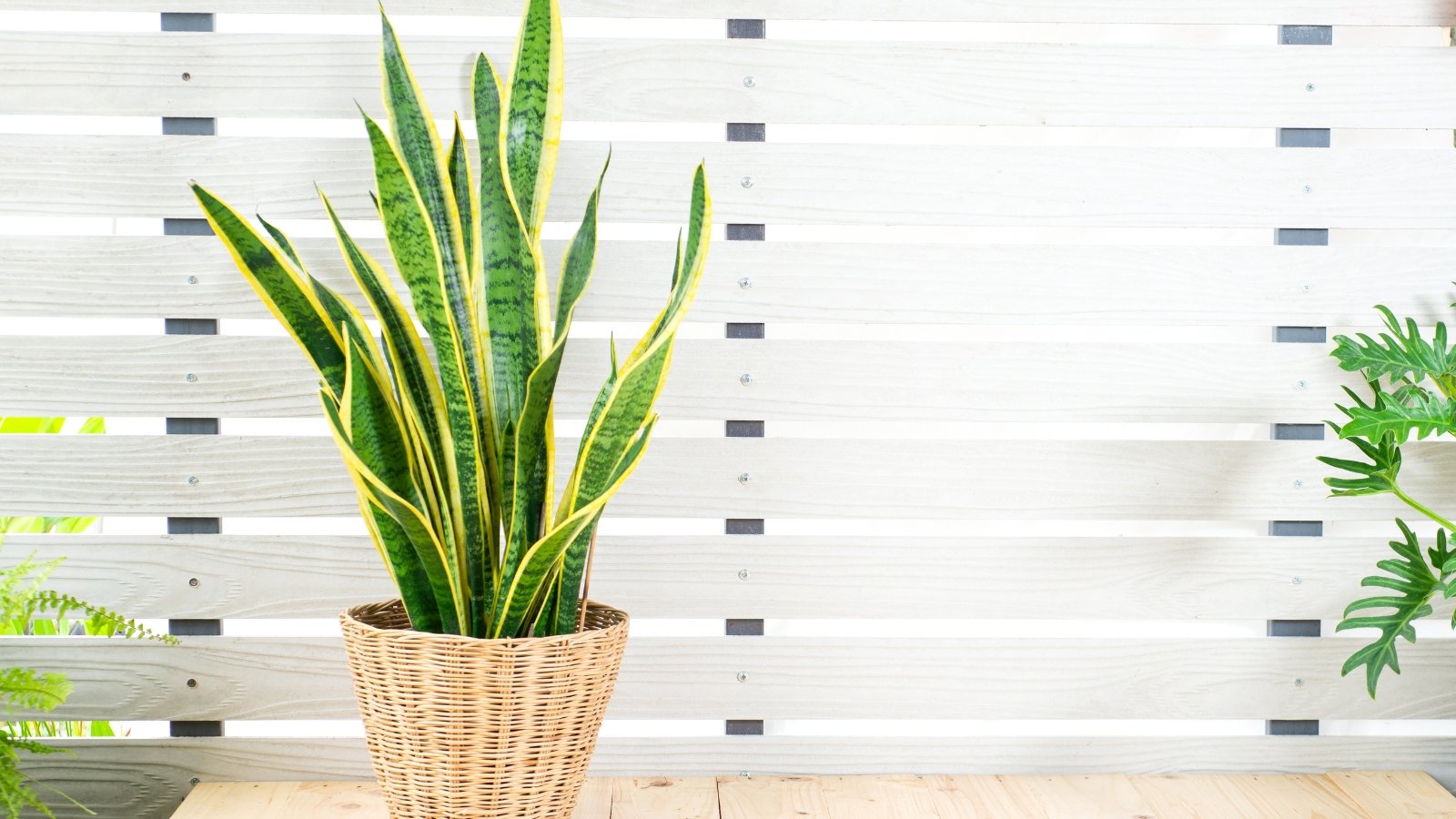
Snake plants are unlike any other plant! They form long, wide leaves that are thick and hard to the touch. They grow in rosettes, with new leaves sprouting from a central location. Happy snake plants will form secondary shoots from their base, which are easy to propagate.
Snake plants root from leaf cuttings, divisions, and secondary shoots. Leaf cuttings take the longest time to root although they’re easy to source. Start by slicing a snake plant leaf off and cut a V-shape into its base. Place the cut leaf into a pot with moist potting soil, or in a glass of water. Place them under a bright window or grow lights—you’ll start seeing roots after a month or longer.
Divisions and secondary shoots are harder to find but easier to root. Start by slicing divisions off of the main plant while keeping as many roots as possible. For divisions, take your plant out of its pot and separate the rosettes. Plant the cuttings and divisions in new containers with fresh potting soil. They’ll root and rapidly grow as spring arrives.
Pothos
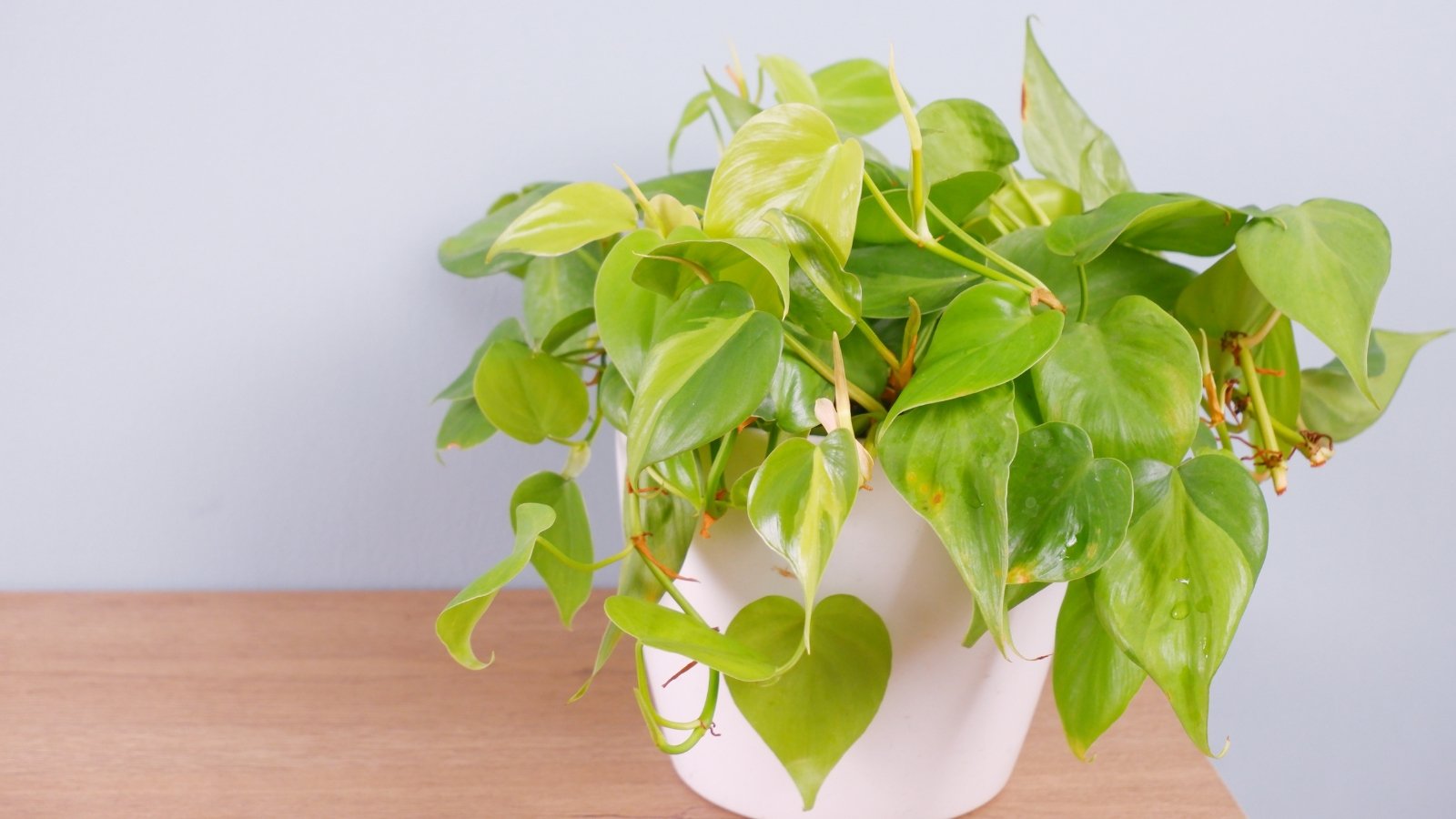
Pothos is the ultimate indoor species! It’s a tropical vining houseplant with lush green leaves that you can propagate easily in November without much effort or maintenance. Simply place pothos stems in water or dirt, give them low light conditions, and watch as they sprout new leaves after rooting.
Pothos plants tend to lose their leaves over time and only keep them near their stems’ ends. Prune your plants regularly to keep them bushy and leafy. After pruning, you’ll have plenty of stems to make more pothos vines! Place them in jars of water if you run out of plant pots since these vines can live many years in water without soil.
Dozens of pothos varieties exist for houseplant collectors. Try the classic golden pothos for yellow-green variegated leaves on vines that can reach over 40 feet long! If you prefer all green leaves, choose jade pothos. For yellow foliage, choose neon pothos.
Weeping Fig
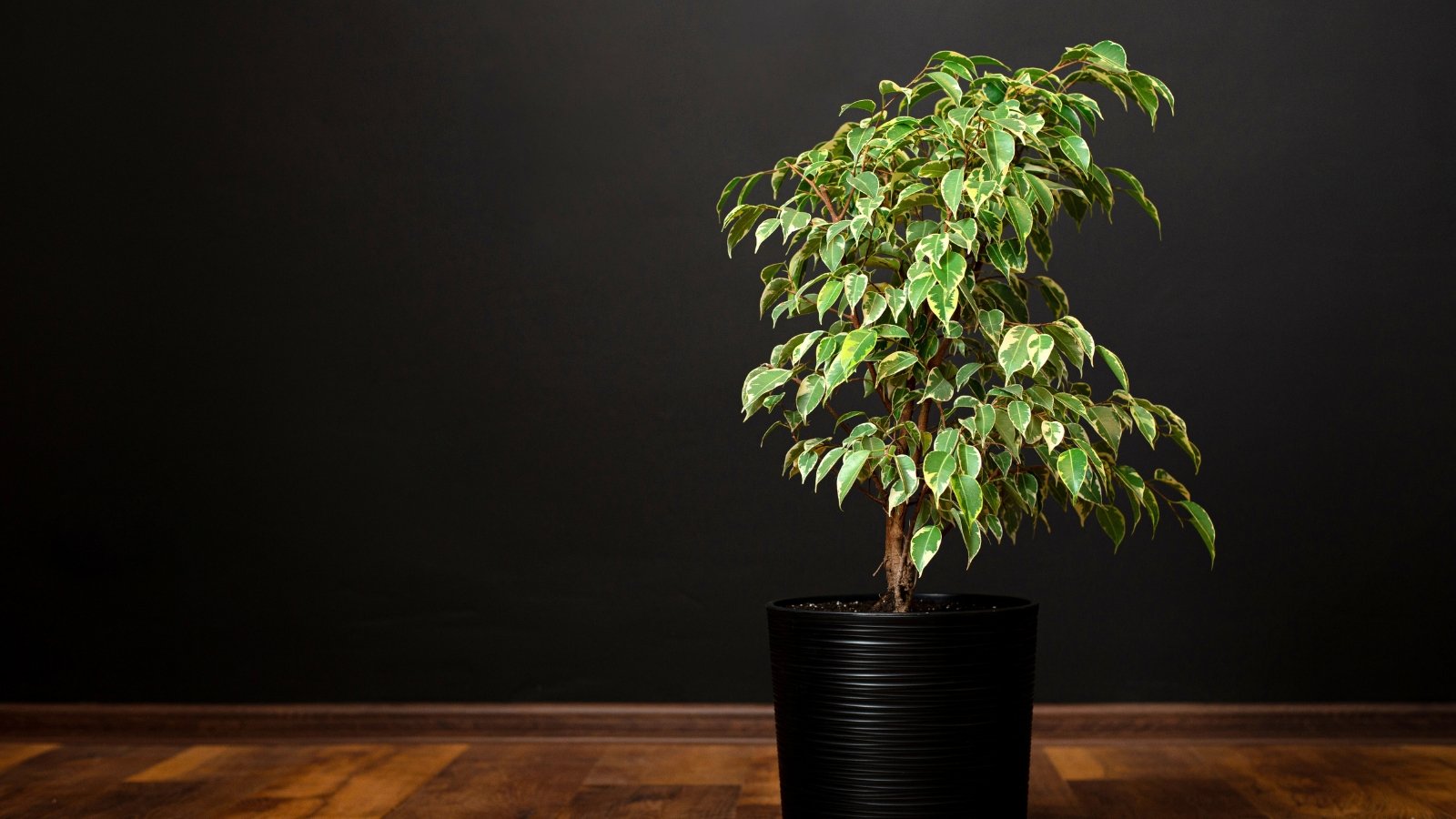
A weeping fig is a kind of Ficus tree that works well as a small houseplant. It has bright green new growth that turns dark with age. The stems and branches are quirky, forming crooks and zig-zags throughout the canopy. Not only is the weeping fig a perfect houseplant, but it’s also an ideal indoor bonsai specimen; it roots readily for easy propagation.
Weeping figs form aerial roots in their native range. The roots drape down and form new trunks to hold up the thick branches. Indoors, your specimen will stay under ten feet. Grow it near a bright window with indirect light, and keep its soil moist but not soggy.
Propagate weeping fig by taking stem cuttings. It’s best to prune your plant for shaping during the winter months, meaning you’ll have plenty of material to make cuttings with. Strip off their lower leaves, place them in pots with free-draining potting soil, and keep them under bright indirect light. They’ll appreciate regular water once their soil dries out, forming roots after two weeks or longer.
Fiddle Leaf Fig

The fiddle-leaf fig is a close relative of the weeping fig and has a similar growth habit. It reaches over 100 feet tall in its native range of central and western Africa, towering over lower-growing vegetation. It’ll stay under 10 feet tall in your home unless it grows in an atrium or greenhouse. Prune it to size as you wish, and save the cuttings to propagate!
Green cuttings with fresh growth sprout roots quicker than woody ones, although either will work for propagation. Slice ten-inch long cuttings off the main plant, then strip them of their lower leaves. Place them in pots with fresh potting soil, then water them well.
A humidity dome or plastic bag around the cuttings will help your specimens grow roots. Place your fiddle-leaf figs near bright indirect light or partial shade, and ensure their soil stays moist. Remove the domes or plastic bags daily to avoid mold or undesirable fungal growth on your sensitive plants.
ZZ Plant
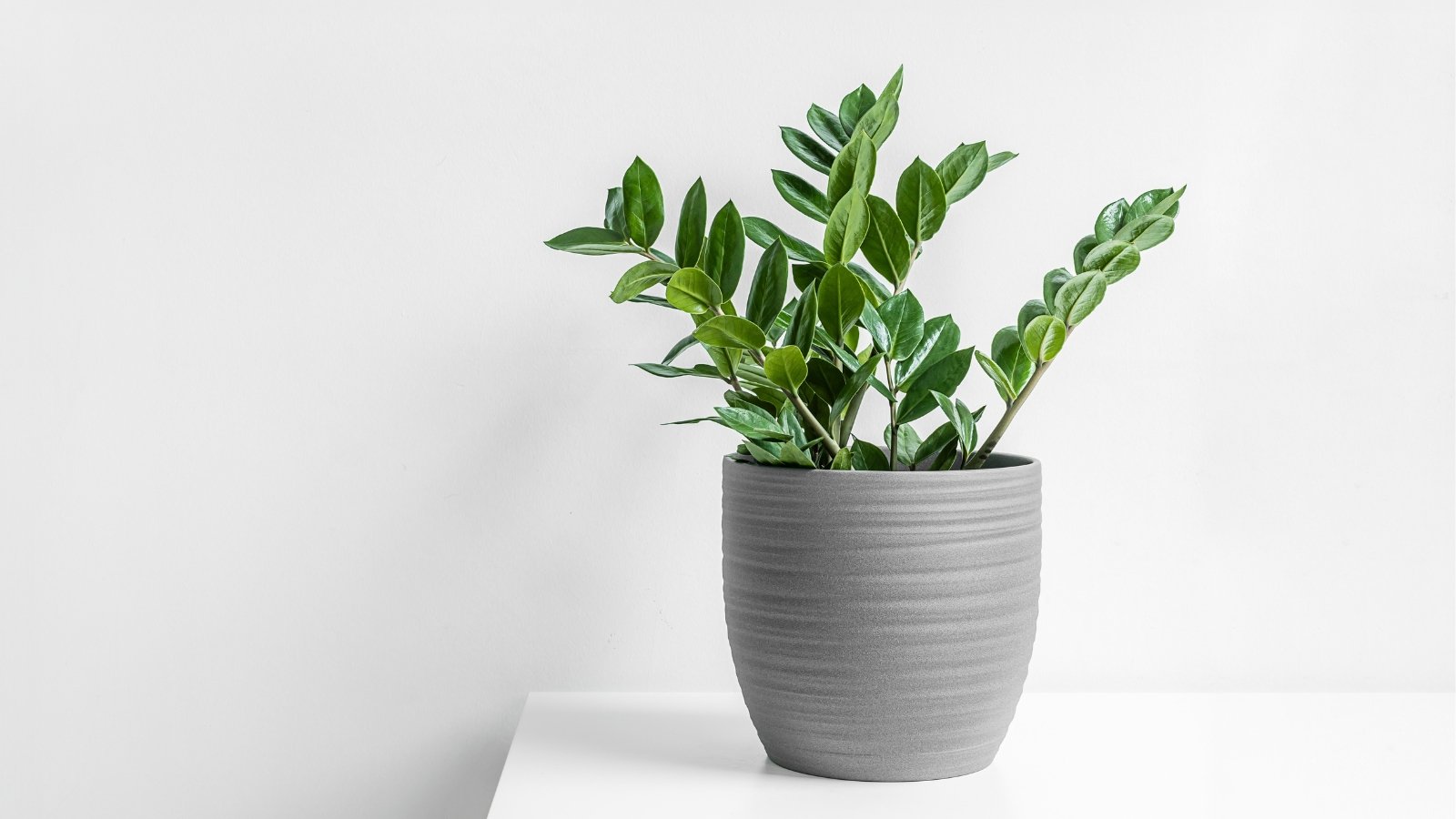
ZZ plants are spectacular houseplants! Their common name reflects their scientific name, shortening it to ZZ instead of the hard-to-pronounce Zamioculcas zamiifolia. These perennials are drought tolerant, thrive in low light, and love indoor climates. Once you have one specimen, you’ll want to create dozens more!
There are many different ways you can multiply existing ZZ plants during November. Leaves, stems, seeds, and rhizomes all work well for propagation. Leaves root in water with bright light, while stems, seeds, and rhizomes all need potting soil that dries out between waterings.
ZZ plants sprout green leaves, although there’s one with black leaves that’s stunning as a houseplant. Black Raven™ ZZ plants, also ‘Dowon’ in the horticultural trade, grow like the green-leaved species type, except their leaves sprout green and shift black as they age. Propagate both types using the methods we mentioned above.
Philodendron
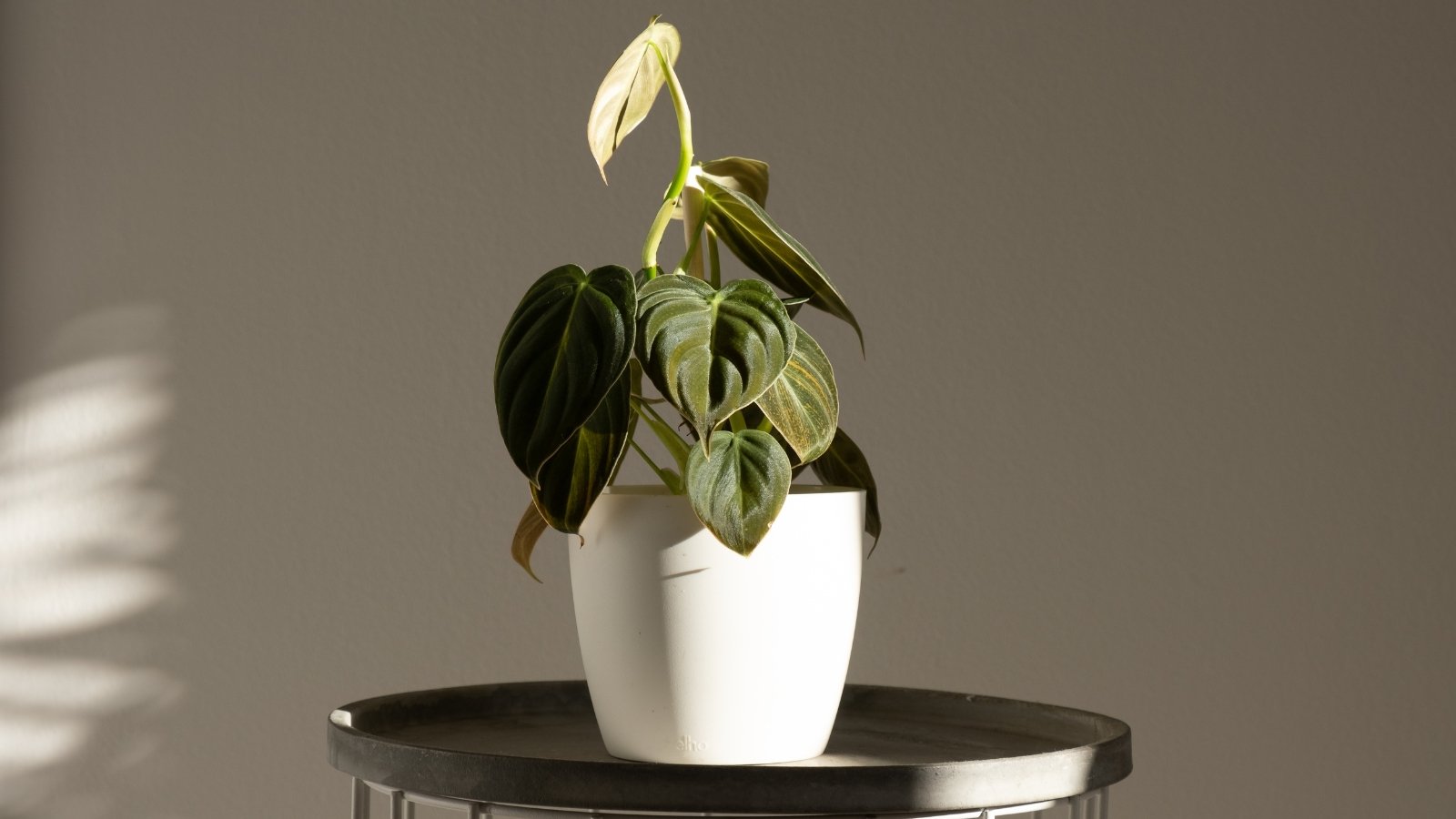
Philodendrons resemble pothos plants; they sprout leaves off spreading vines that creep along the soil and climb trees with aerial roots. The Philodendron genus is incredibly diverse, and there’s sure to be an ideal type for you and your home. If your friend has an overgrown one, ask them for a stem cutting after they prune it.
Stems root easily in water or soil. Most philodendrons need bright indirect light daily or partial shade, especially while they lack roots during propagation. Dappled sunlight with full shade works well in outdoor locations for mature specimens—it mimics a tropical forest where these plants must climb other species to reach direct sunlight.
Some low-growing and shrublike philodendrons exist for the adventurous houseplant collector! Propagate them the same as vining types with stem cuttings in soil or water. Try Thaumatophyllum xanadu, which was formerly known as Philodendron xanadu for its cut leaves and mature height of two to three feet. Opt for Thaumatophyllum bipinnatifidum, formerly known as P. bipinnatifidum if you like tree-like species; it reaches 10 feet tall with large lobed leaves.
Spider Plant
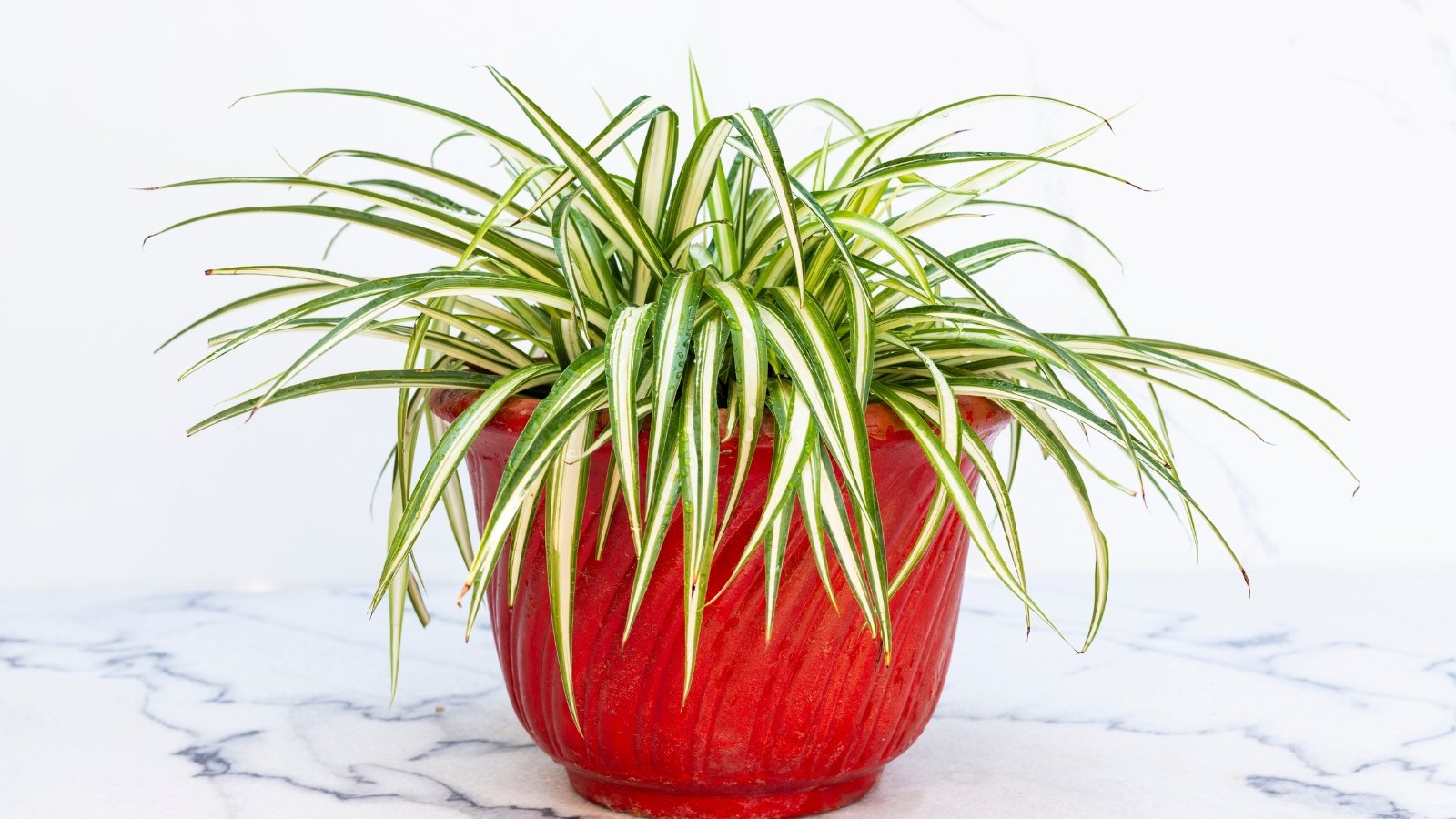
Spider plant is a vigorous houseplant that offers dozens of opportunities to propagate in November and throughout the winter. Mature specimens send out long stems with white flowers that form seeds after successful pollination. After seeds, plantlets with roots start growing in place of the flowers. Both seeds and the aerial plantlets are ideal for propagating this easy-growing species.
The flowers won’t pollinate themselves on their own. You’ll need a paintbrush to dust pollen from one flower into another. After a few days, a fruit-like structure with three sections will form with black seeds inside.
Sprout seeds or plantlets in moist potting soil with bright indirect light. Spider plants, like ZZ plants, are extremely low light tolerant, although they appreciate some brightness while germinating and sprouting roots. Their leaves will turn yellow if they have too little light or too much soil moisture. Water them once their soil dries on top, and give them more light if it’s dark.
Cape Primrose
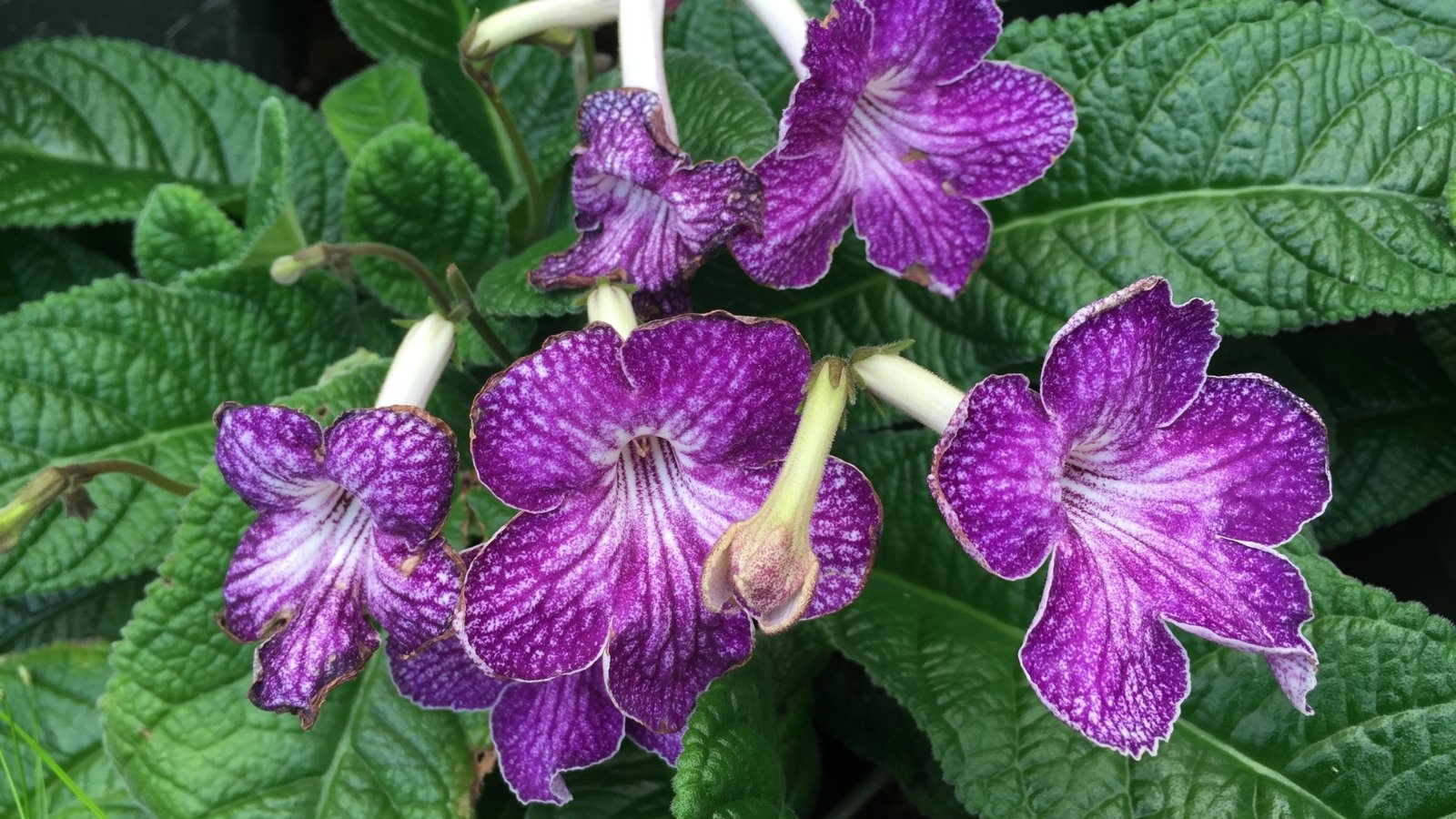
Cape primrose grows a lot like African violets. Flowers sprout off stalks from central rosettes of foliage. Instead of round or heart-shaped leaves like African violets, cape primroses have long, fluffy leaves with round tips and fuzz throughout.
These easy-growing houseplants sprout roots readily from leaf cuttings and divisions. Place cuttings in moist, free-draining soil. You’ll want the dirt to be moist but not soggy; this keeps rotting conditions away from your sensitive propagules. You’ll know they’re ready for transplanting when they sprout new leaves and blossoms in abundance.
Divide cape primrose by removing its container first. Find rosettes of leaves that grow some distance from the crown and loosen these gently from the parent plant. Repot these divisions with moist potting soil, and place them near a bright window with indirect light or partial shade.
Dwarf Jade
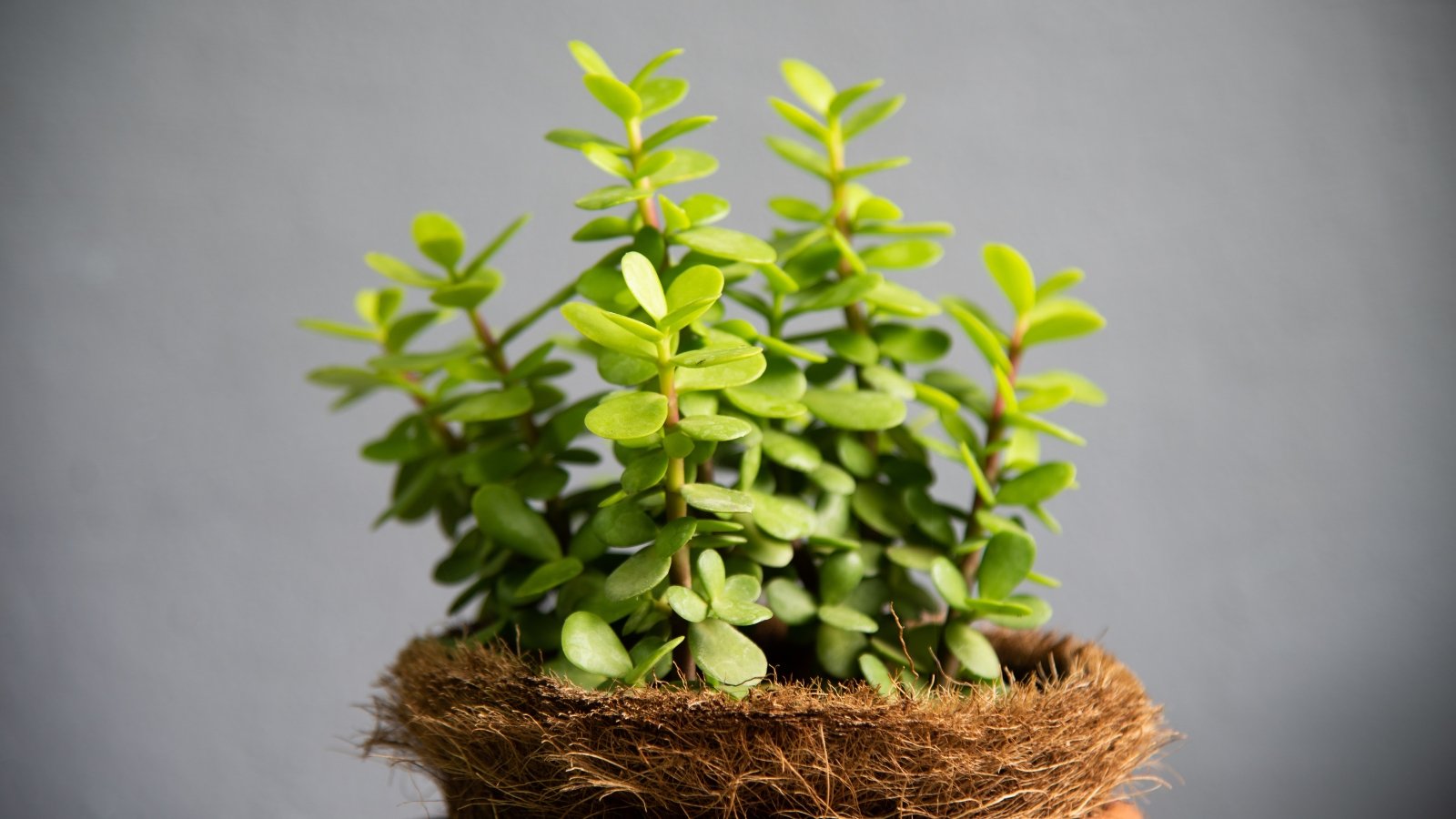
The dwarf jade plant, or elephant bush, is a woody succulent species perfect as a houseplant, bonsai tree, or outdoor hedge. It’s frost-tender but survives mild winters in zones 9 and 11 throughout North America. Grow it indoors year round for its fleshy green leaves and brown woody stems—it’s incredibly ornamental!
Like other succulents, the dwarf jade plant sprouts readily from its leaves or stems. Plant them in free-draining potting soil, and let them have moist soil with breaks between waterings. This species is drought tolerant, but consistent moisture is necessary while the stems or leaves sprout roots. Once they have ample growth, they’ll be drought tolerant.
Unlike most previous houseplants on this list, dwarf jade needs full sun or partial shade conditions indoors. They appreciate sunny windows with at least two hours of daily sunlight. Grow lights are perfect for dwarf jade plants in areas with short winter days to supplement their natural lighting. If you move yours outdoors, ensure it doesn’t receive too much direct sunlight. This can scorch the leaves.
Calathea
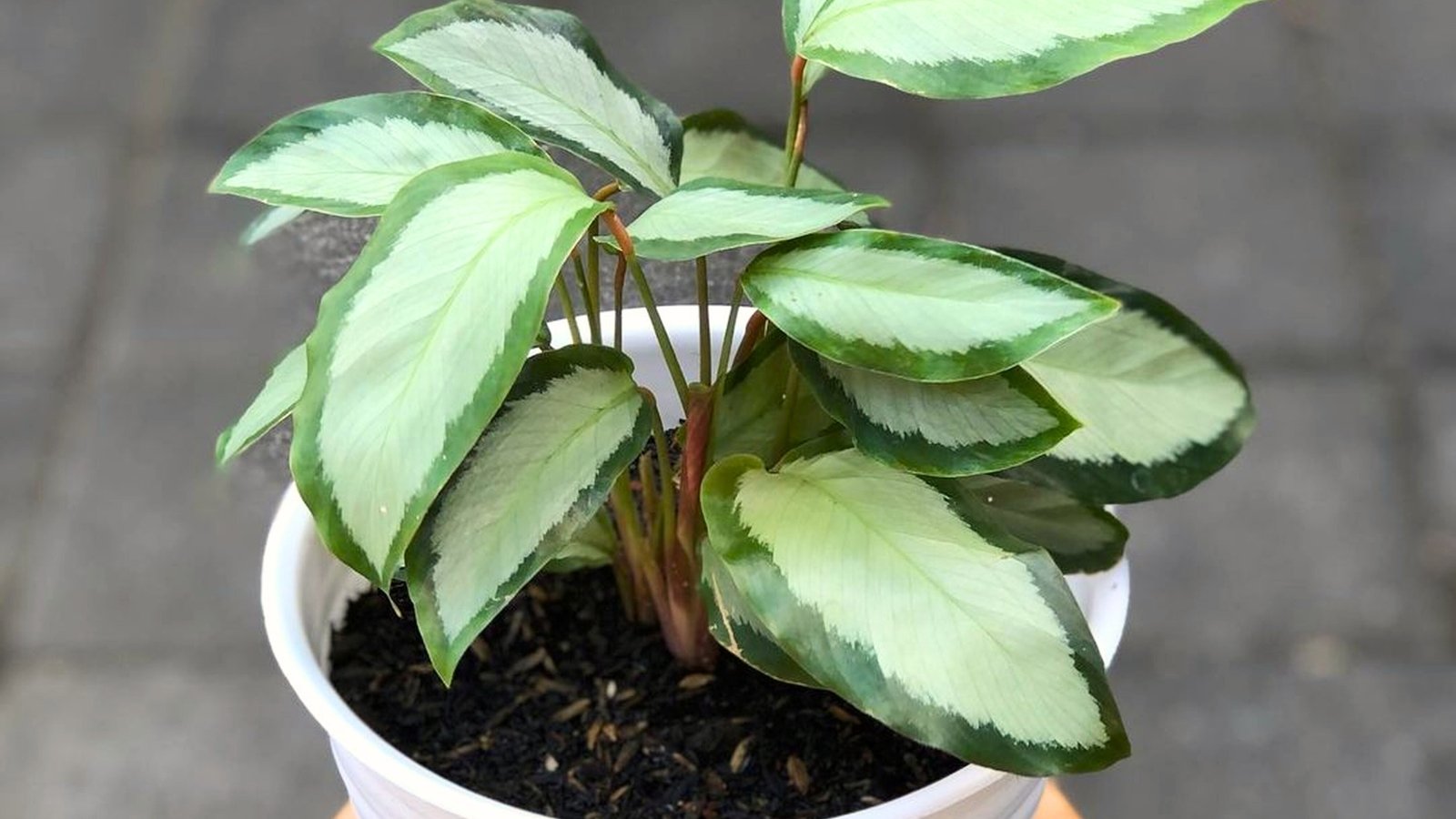
Calatheas are famous for being challenging houseplants to take care of. Although this is true, they’re just like any other plant; give them the conditions they need, and they’ll thrive. They’ll separate into multiple plants when you divide healthy and mature specimens.
To divide a calathea, remove its pot and take stock of the roots. You’ll want each division to have a robust root system. Separate plants with a knife or scalpel, taking care to leave as much healthy growth intact as possible. Up-pot the divisions in containers with fresh potting soil, and water them well.
Calatheas need bright light and moist conditions to thrive. Spray their leaves every two days, or consider placing them near a humidifier or in a moist bathroom. Choose an ornamental cultivar like ‘Pinstripe’ for lush green leaves with pink stripes, or ‘Crimson’ for rosy pink leaves.
Zonal Geranium
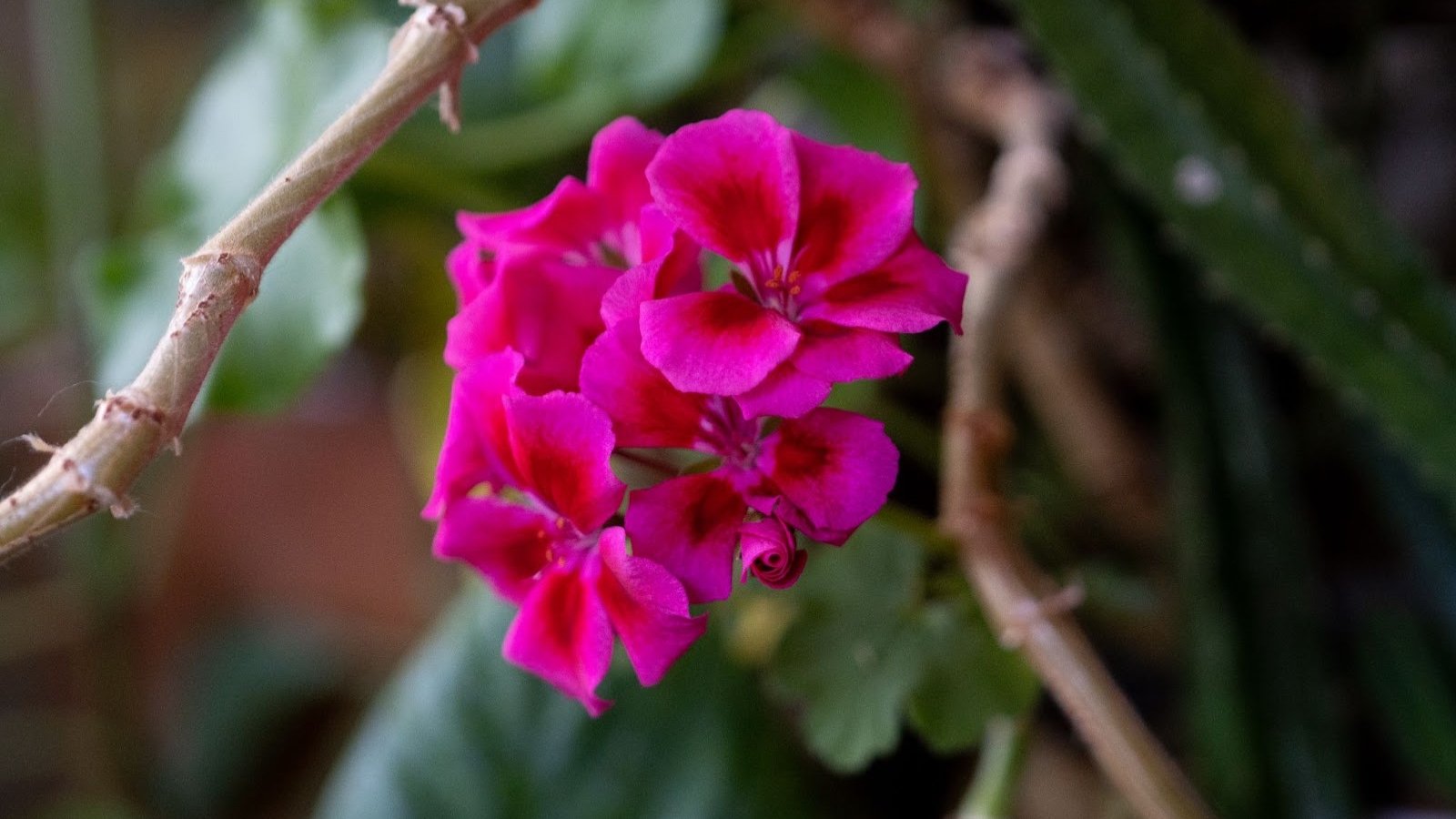
Common zonal geraniums aren’t true geraniums! They reside in the Pelargonium genus and are close relatives of hardy geraniums—the two are in the same family Geraniaceae. Zonal geraniums are ideal indoors because they lack frost hardiness in cold winter zones. Bring them outdoors for the spring and summer, then situate them in their home location for the cool months.
Growers in zones 10 and 11 are in luck; you can grow zonal geraniums outdoors and they’ll survive year to year as perennials. With hundreds of cultivars and varieties, there’s sure to be a perfect geranium for your home. Once you find one you love you’ll want to multiply it endlessly.
Zonal geraniums are easy to propagate. Start by taking cuttings with healthy green leaves at their tips. Plant them in well-draining soil, and keep their roots moist, not soggy. Give them as much light as dwarf jade plants, with at least two hours of direct sunlight daily. They’ll produce colorful blooms for years to come!
Coleus
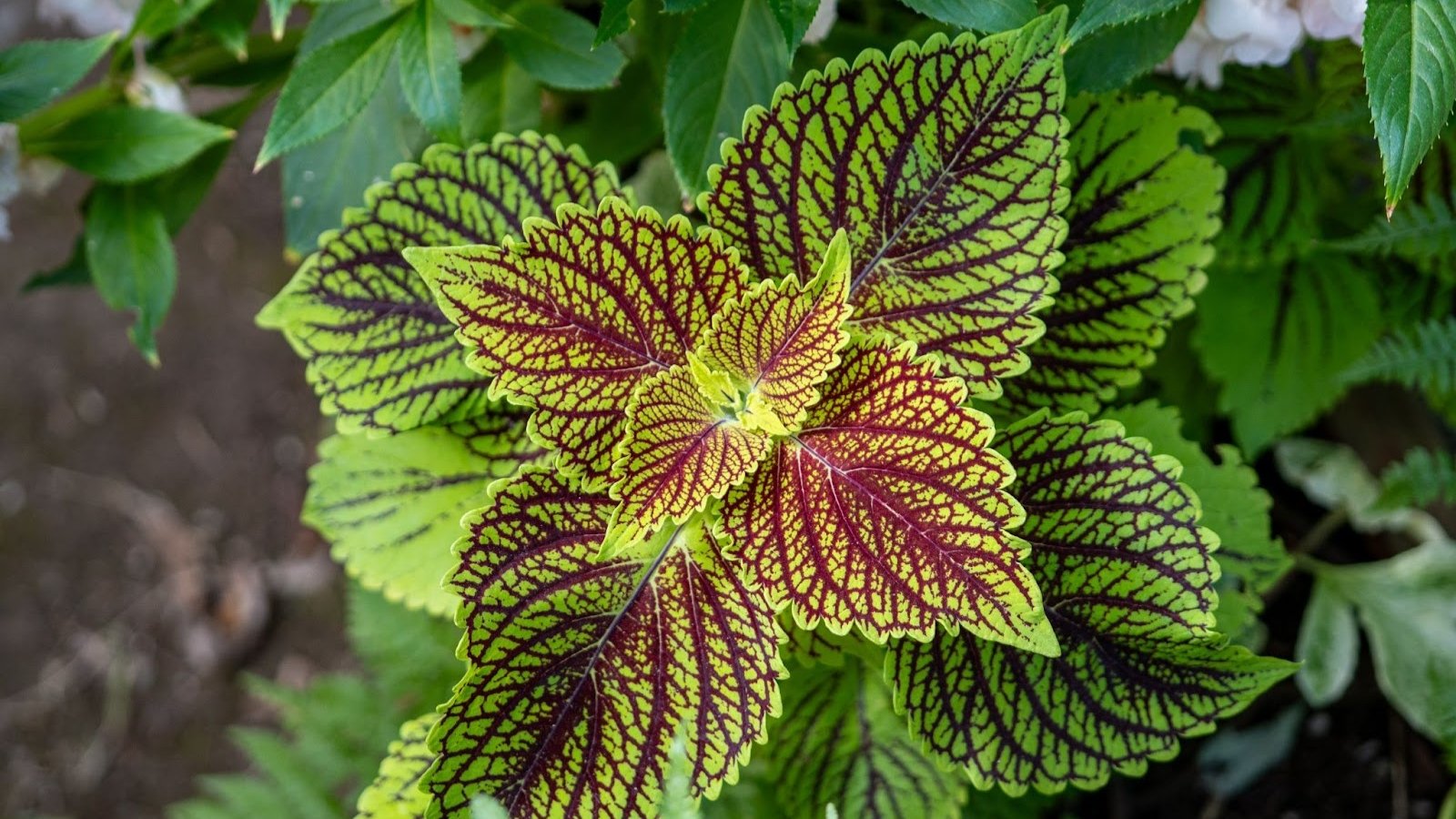
Coleus plants, like geraniums, are gorgeous garden ornamentals that are frost-tender. Many growers plant them outdoors for spring through summer before taking cuttings in autumn. They’ll overwinter the cuttings indoors, and plant them outside when they have ample roots in spring. Coleus seeds also sprout new seedlings, although they might have different leaf patterns than their parents.
You can do the same as growers do with your favorite cultivars. Find a leafy variety you like; they range in leaf shape, color, and plant structure. You’ll find ones with pink-green, red, green, yellow, or maroon colors. To multiply them, take six-inch or longer pieces of the stems and slice them off the main plant. Strip their lower leaves, then prepare them for rooting.
Root your freshly cut stems in soil or water. Give them bright indirect light or three to six hours of direct sunlight daily while they root, as they need extra brightness during this vulnerable time. You’ll see roots within a few weeks. If your cuttings are in the soil, you’ll know they have roots after they sprout new leafy growth.
Purple Spur Flower
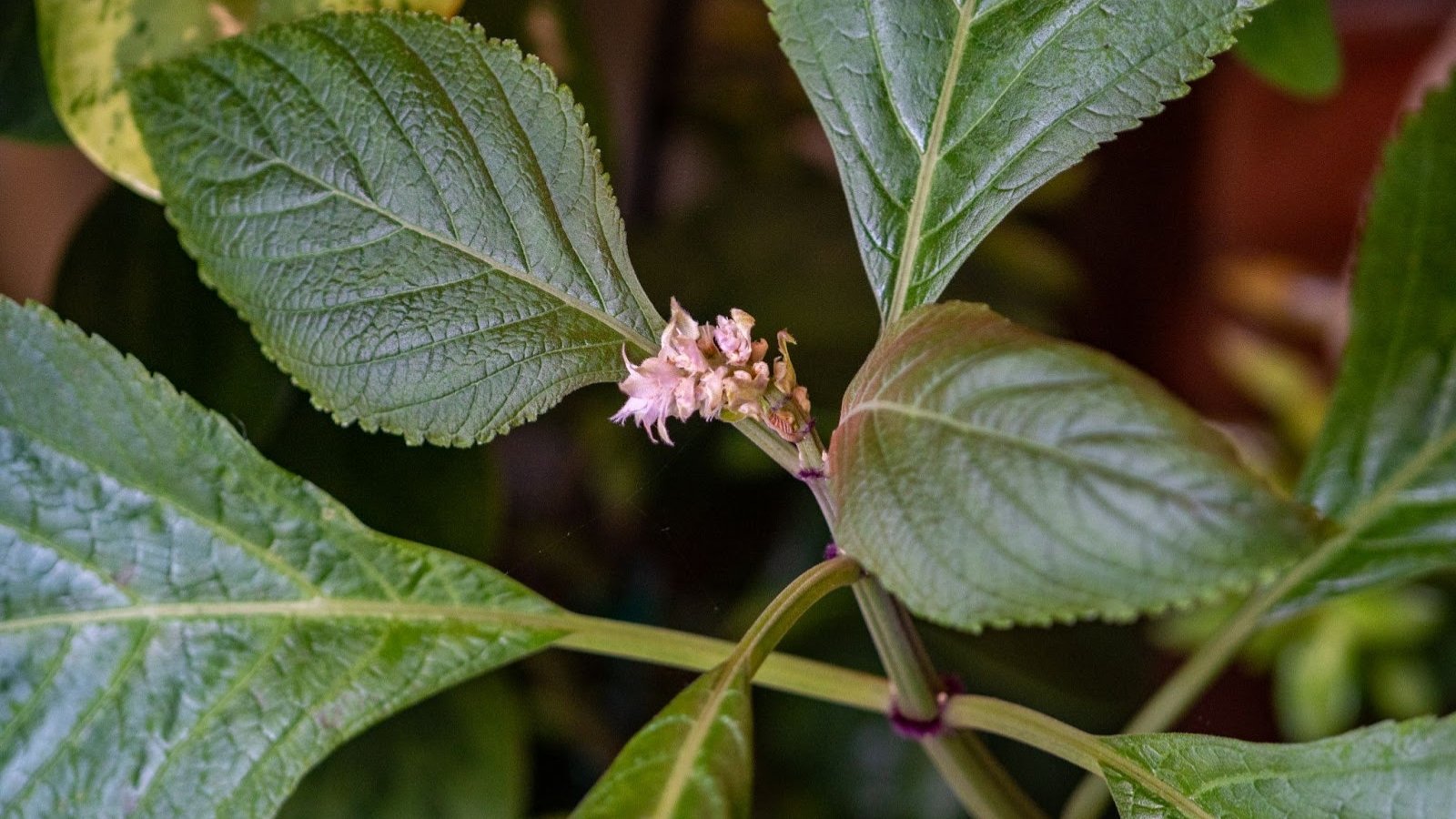
Purple spur flower is a close relative of coleus, although it’s a much showier plant with spectacular blooms. Its green, aromatic leaves aren’t as crazy as coleus ones are, but its blooms outshine the common garden species. You’ll see long flower spikes up to 14 inches long with layers of purple blossoms that attract bees, butterflies, and hummingbirds.
Propagate purple spur flowers in the same manner as you would coleus plants. Slice off pieces of the stems six inches long with leaves at their tips. Strip the bottom leaves and place the stems in containers with soil or jars with water. They’ll form roots after two weeks or more before sprouting new leaves and flowers.
Unlike coleus, purple spur flowers can reach 10 feet tall! Give them containers at least eight inches deep so they have sufficient space to send out deep roots. If your plants droop often or need more water than normal, they may need a larger container with new dirt.
Swiss Cheese Plant
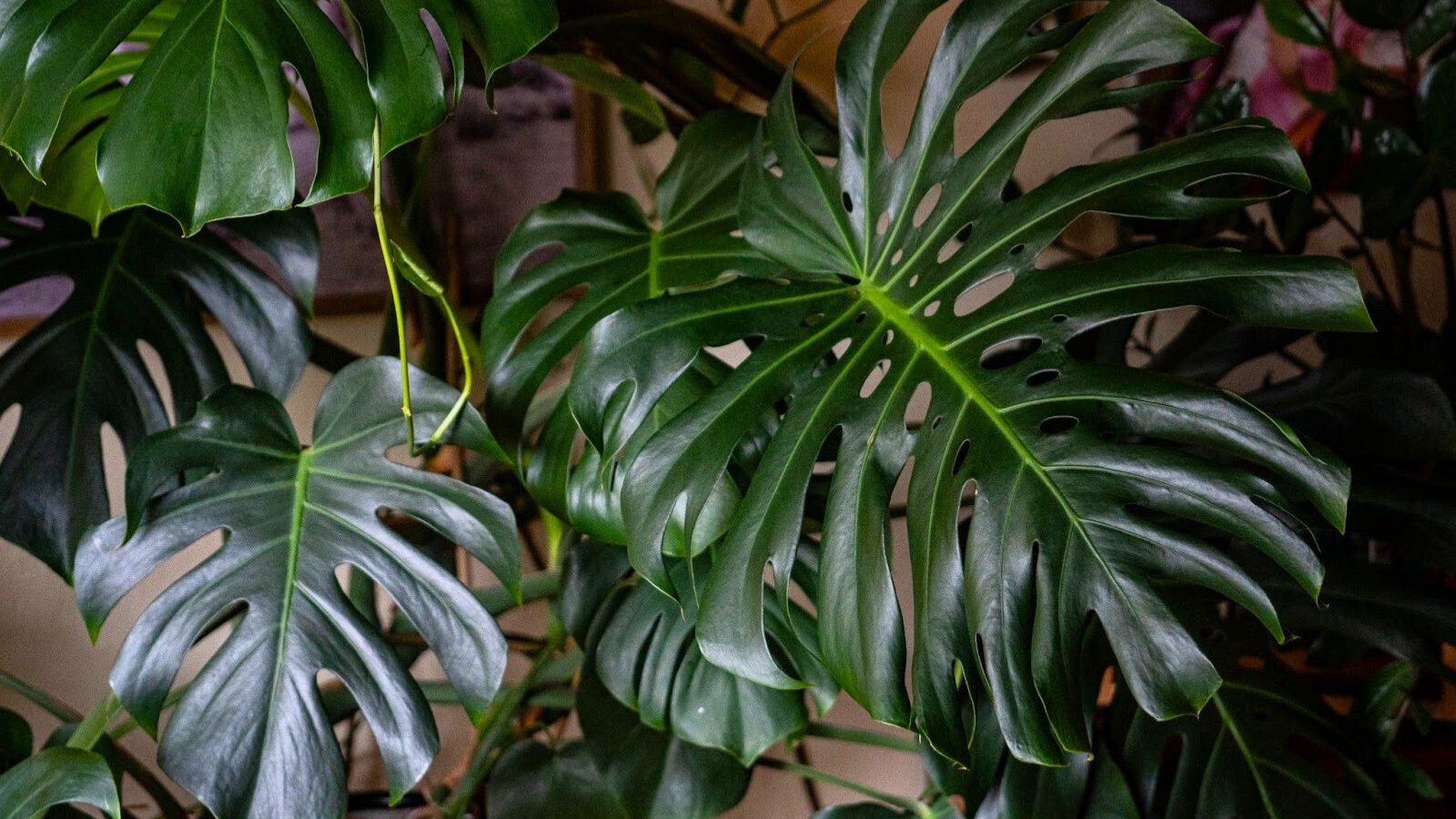
Swiss cheese plants are iconic vining spreaders from warm, tropical regions in Central and South America. You’ll find them using thick, aerial roots to latch onto trees and grow tall to 70 feet! In your home swiss cheese plants will stay between six and eight feet tall.
Pothos, philodendrons, and Swiss cheese plants are all from the same family Araceae. The multiplication techniques for pothos plants and philodendrons also work well for Swiss cheese plants. Take stem cuttings using a pruner, as their stems are extremely thick and tough! Remove a few lower leaves, then place the pieces in water or soil.
Monstera cuttings root after a few weeks with bright indirect light or partial shade indoors. Keep their roots moist, not soggy, and move them closer to the window if their leaves turn yellow or fall off excessively. You can move mature specimens outdoors from spring through summer; they appreciate an outdoor vacation!
Florist Kalanchoe
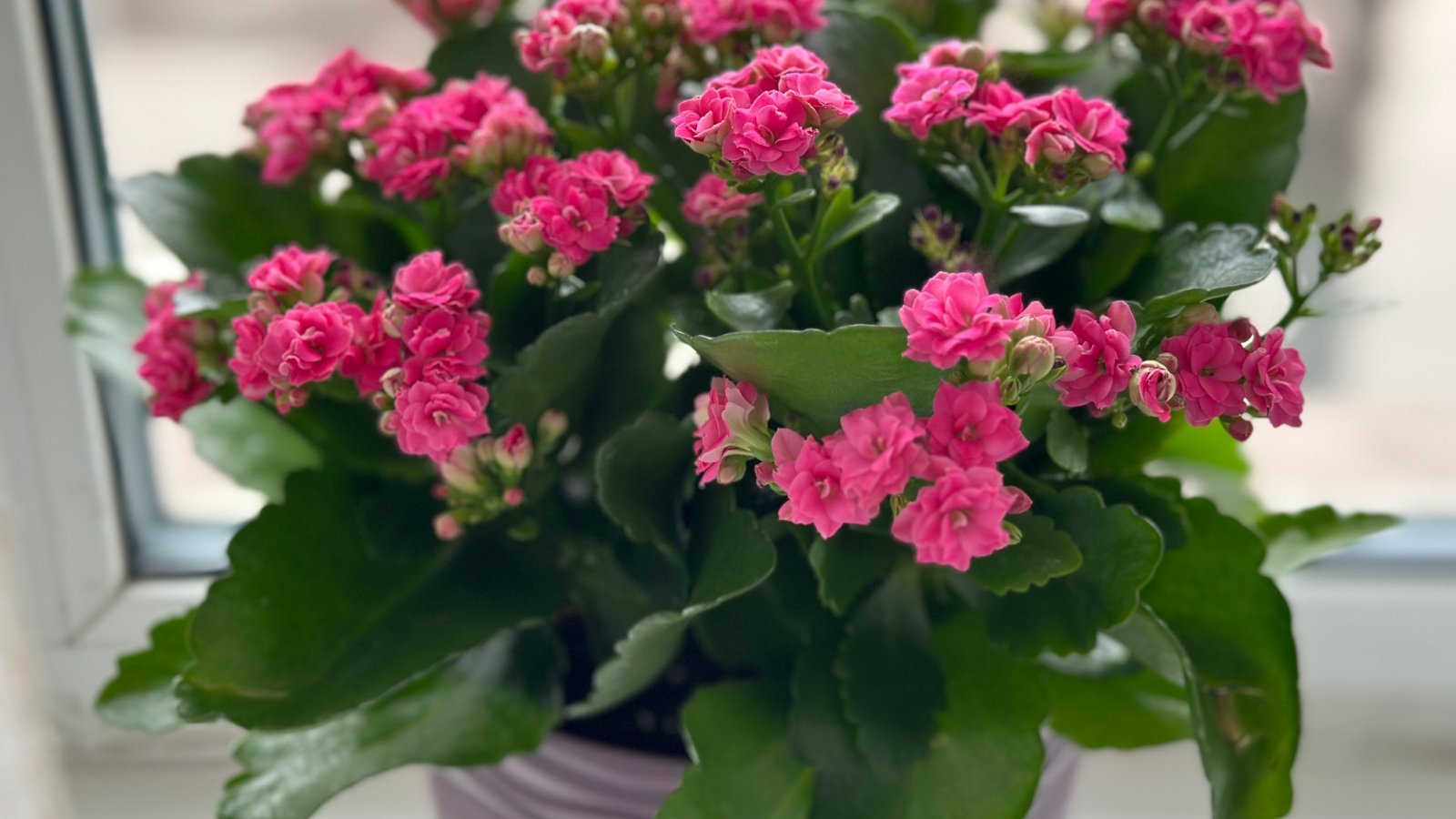
Florist kalanchoe plants are incredibly common, as most retail garden centers carry hundreds of them in spring. There are pink, red, orange, and yellow flowering cultivars with green, succulent leaves. They’re perennials in zones 10 through 12, and ideal houseplants in all other regions.
Like other succulent species, florist kalanchoe plants love bright light and free-draining soil. When happy, mature specimens send out side shoots that look like new rosettes. Slice these off the mother plant, and pot them in containers with fresh soil. They’ll root readily and thrive in a sunny indoor room.
These perennials are light feeders and drought tolerant. They often die of too much water or fertilizer rather than too little. An easy trick to know when to water them is the finger test. Stick your finger in the soil and see if you sense moisture. If you do, hold off on watering until the soil dries more.
Mother of Millions
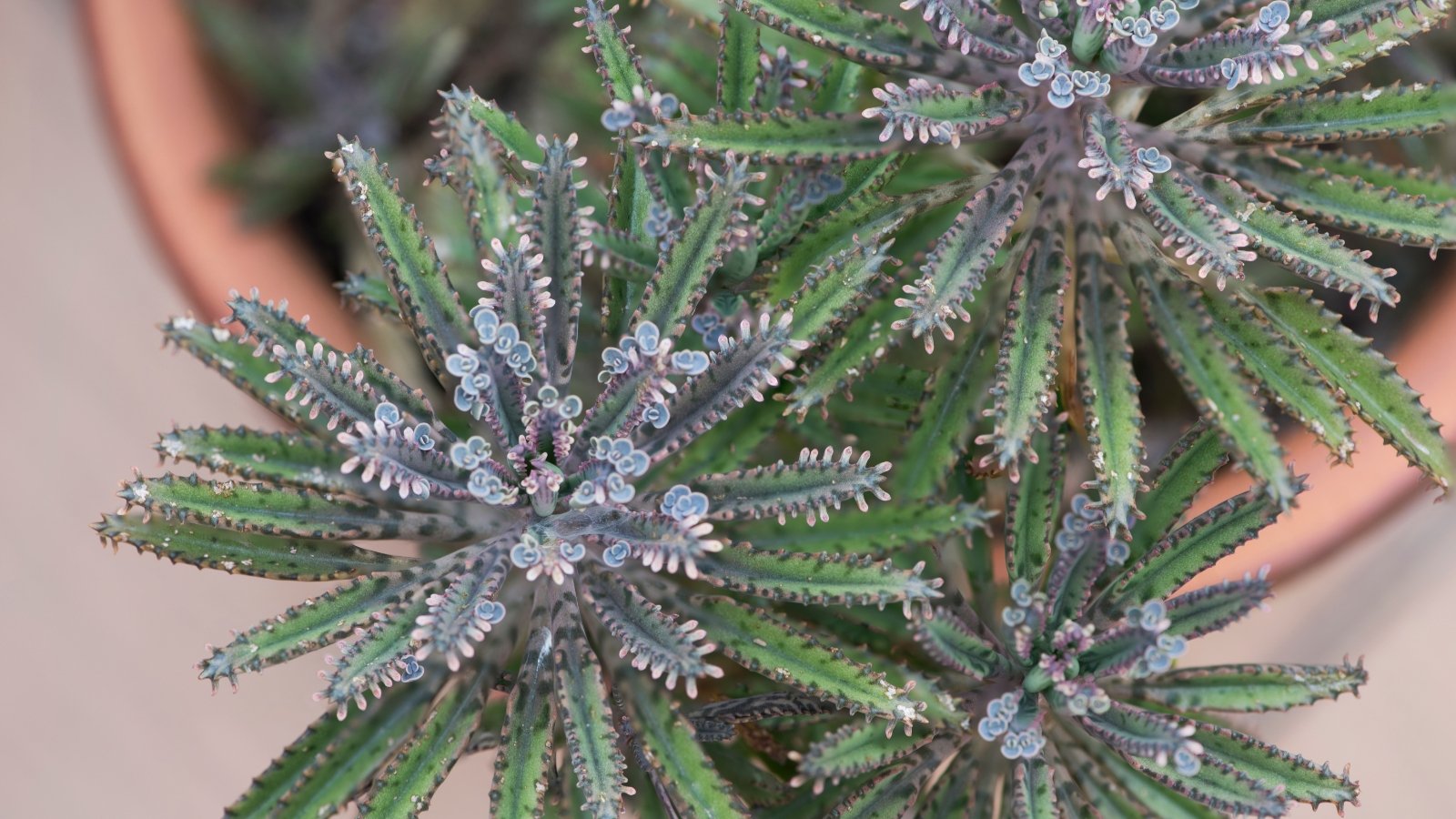
Mother of millions is the perfect name for this tropical plant species. This houseplant sprouts tiny plantlets with roots on its leaves, making it easy to propagate in November or most other times of year. When the plantlets fall to the ground, they root readily and grow rapidly. You’ll see tall stalks develop with more leaves that have additional baby plants on their margins.
Because this houseplant forms seedlings without seeds, it’s straightforward to propagate. Simply gather some plantlets, scatter them in a container with potting soil, and keep the soil moist. They’ll sprout tall, and when they receive partial shade or full sun they’ll flower and form seeds.
You can also use seeds to multiply your mother of millions, although using plantlets is much easier and quicker. Plant seeds on the soil’s surface, and keep them moist under bright light. Seeds need more light than plantlets to thrive, so grant them grow lights if they receive less than two hours of direct sunlight daily while germinating.
A note about this species: it’s invasive in some areas of USDA hardiness zones 10 and 11. Grow it as a houseplant to control its spread, and avoid planting it outdoors outside its native range in Madagascar.
Devil’s Backbone
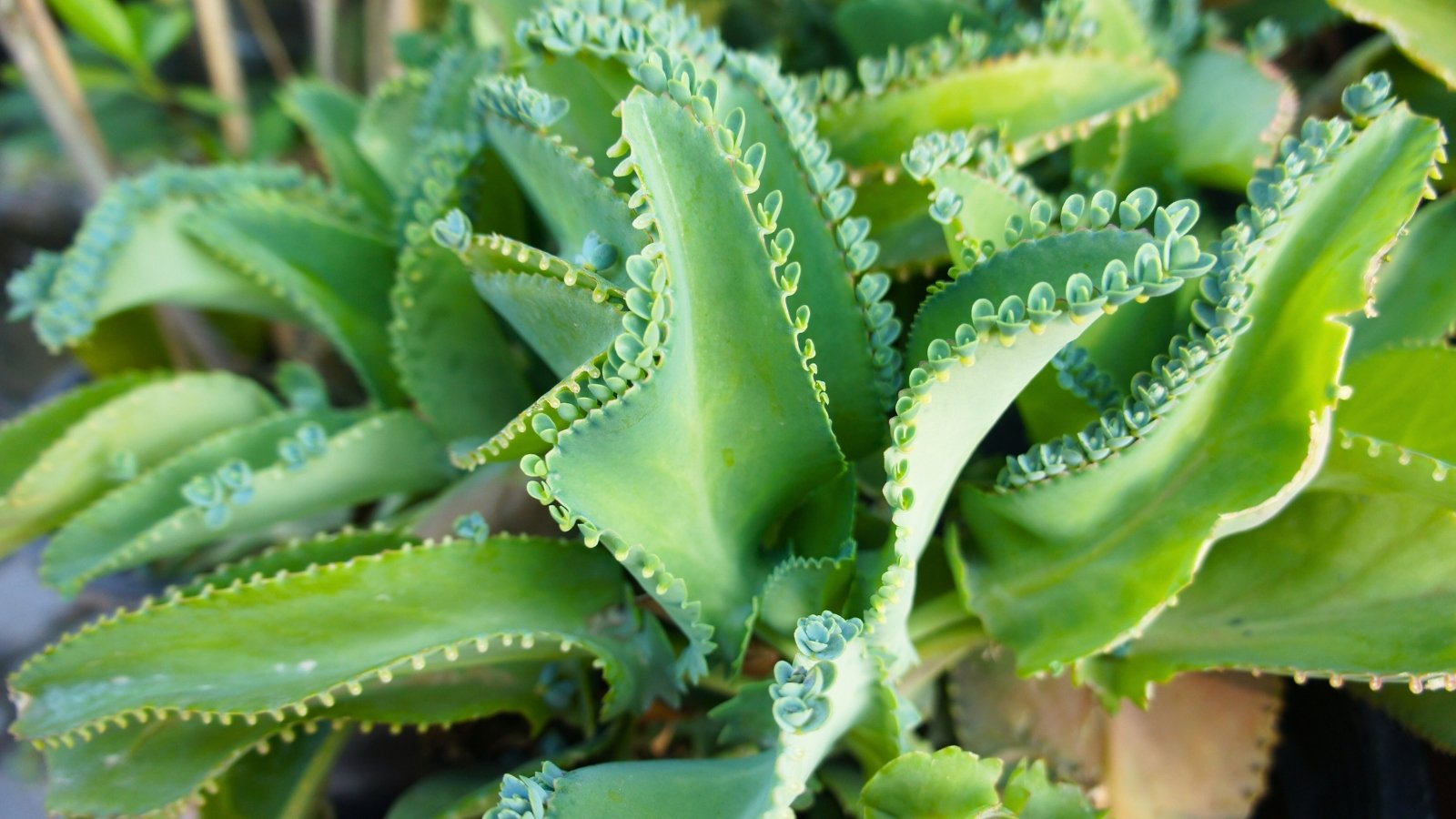
Devil’s backbone resembles the mother of millions, except it has fewer plantlets and bigger leaves than its relative. Devil’s backbone sports bright green leaves that resemble tongues with their shapes. Baby plants grow on the leaves’ margins; they fall to the ground when mature to root and multiply the species.
Whether you opt for the mother of millions or Devil’s backbone depends on your decorative plant tastes. If you like big, bold statement pieces, choose Devil’s backbone. If you prefer thin leaves with variegation, opt for the mother of millions.
This species needs bright indirect light or partial shade to full sun while indoors. Grant it plenty of light, especially while you’re propagating it. Seedlings and new plants require more sunshine to thrive than mature specimens, and they’ll need all the brightness they can get while the days are short in November.
Aloe Vera
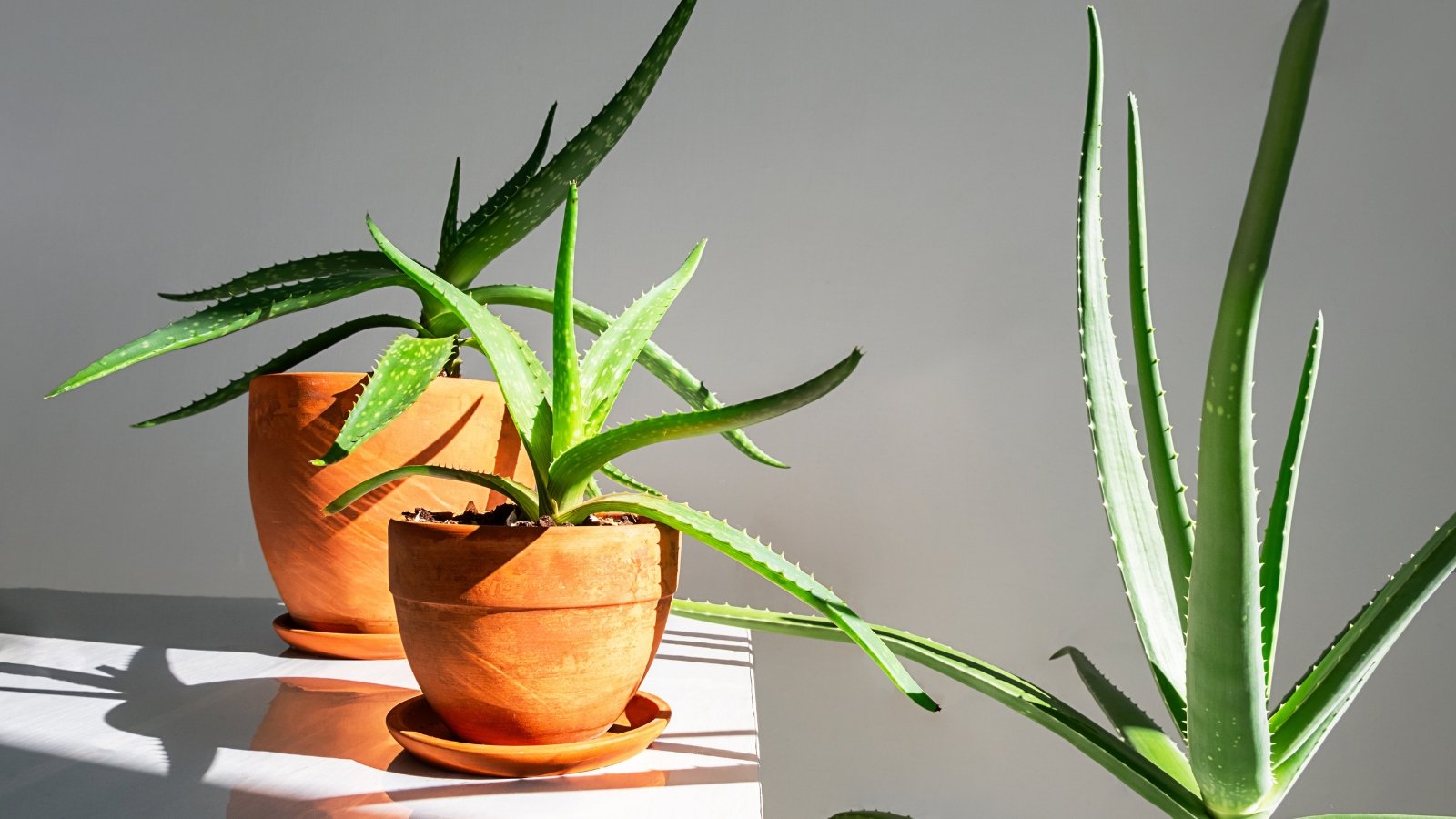
Aloe vera is another sun-loving succulent that prefers warm zones without harsh winter frost. Growers in cold climates can try bringing their aloe plants indoors for the winter and move them outdoors for spring and summer. While they’re indoors, you’ll want to propagate them into as many new specimens as possible!
Aloe propagation is effortless; the main consideration is light and soil drainage, as these perennials prefer dry soil and lots of light inside your home. Ensure these two needs are met, and your cuttings, seeds, or divisions will thrive during November.
Propagate your aloe vera plant with cuttings or divisions, as they have higher success rates than seeds do. Take leaf or stem cuttings, and let their wounds callus for a week or two. For divisions, unpot your plant and separate it into multiple ones with roots. Plant your cuttings or divisions in a container with well-draining succulent or cactus soil, then water them once their soil dries.
Peperomia
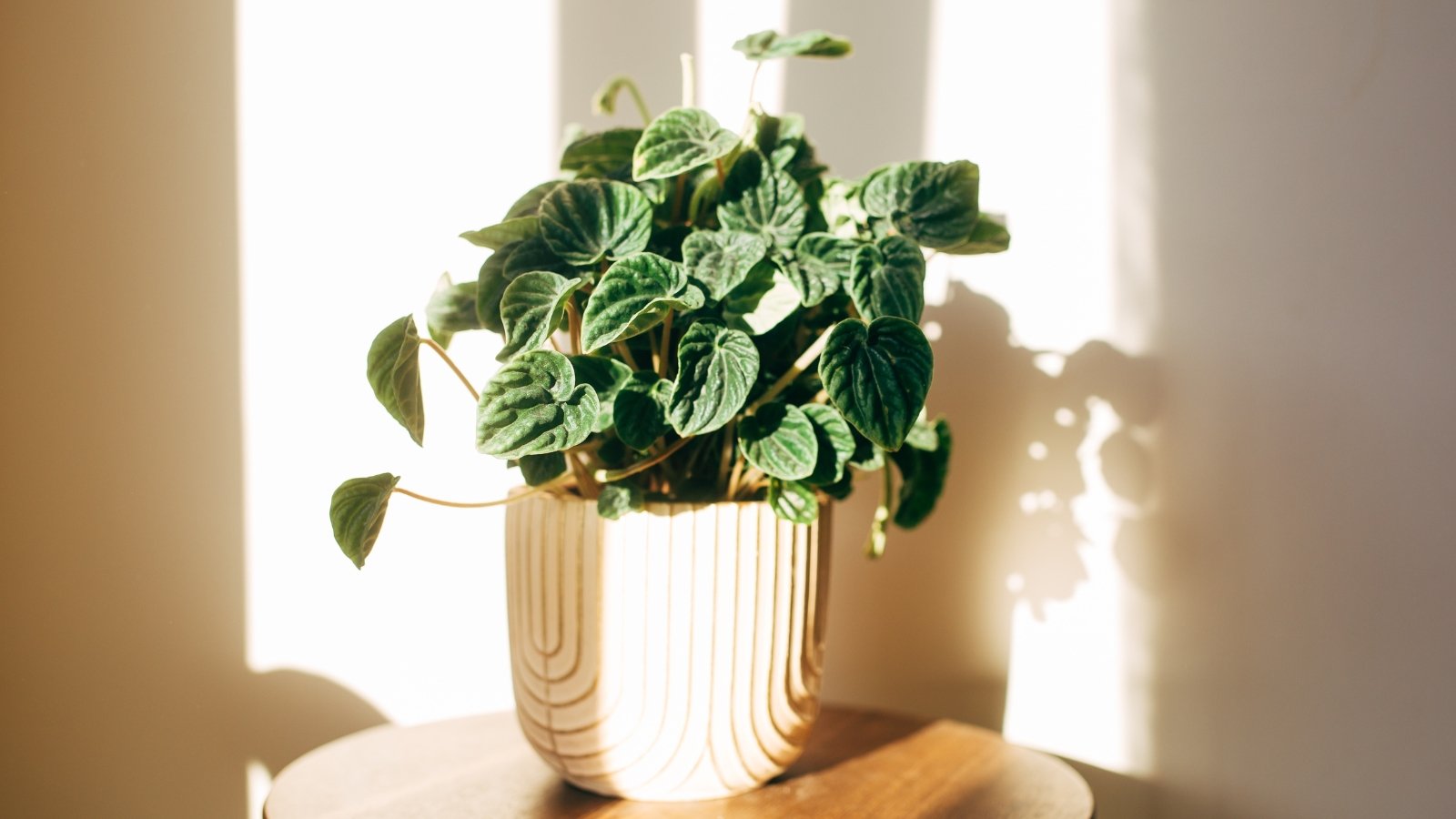
Peperomias include dozens of different varieties with similar growth habits. They’re fleshy, tropical plants with leaves of all shapes, sizes, and colors. Some vine and creep, while others are bushy or low-growing from central rosettes. No matter which type you tend to, you can propagate it with cuttings or through divisions in November.
It’s best to use cuttings for multiplying vining types, whereas division is better for bushy varieties. Types like the string of turtles will break apart if you attempt to divide them while taking cuttings allows the mother plants to persist while you create new ones. Change up the method you use depending on the peperomia you cultivate.
Some bushy types to try as houseplants are baby rubber plants, emerald ripple peperomia, and watermelon peperomia. Try creeping types like round-leaf or vining peperomia if you prefer spillers that fall out their containers’ edges.
Artillery Fern
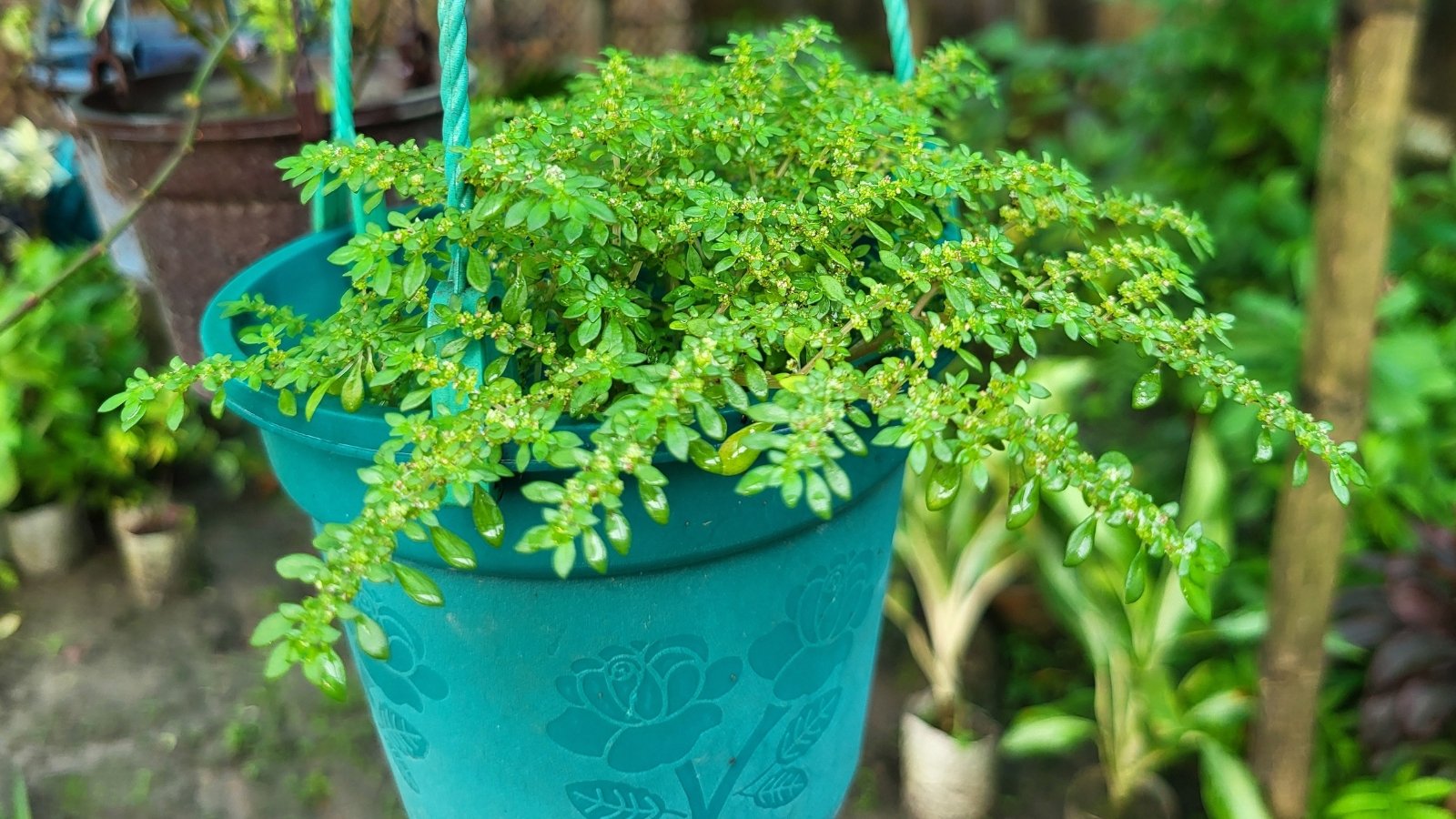
Artillery fern isn’t a fern; it’s a succulent species of Pilea. It’s a relative of other Pilea plants like P. glauca and the Chinese money plant. Grant your specimen three to six hours of bright indirect light, fertile soil, and water when its soil dries. Happy plants produce dozens of fleshy stems that you can use to propagate more artillery ferns.
Start by slicing stems off the mother plant four to six inches long. Plant them in pots with fresh soil, and water them well. They’ll need little water while they lack roots, but will quickly start drinking once they form. Ensure their soil is moist but not soggy and they’ll grow well without rotting.
Try using the finger test if you’re unsure whether to water. Stab your pointer finger deep in the soil, then see if you sense any moisture. Water well if it’s bone dry, and wait on irrigating if you sense water below the soil’s surface.
Chinese Money Plant
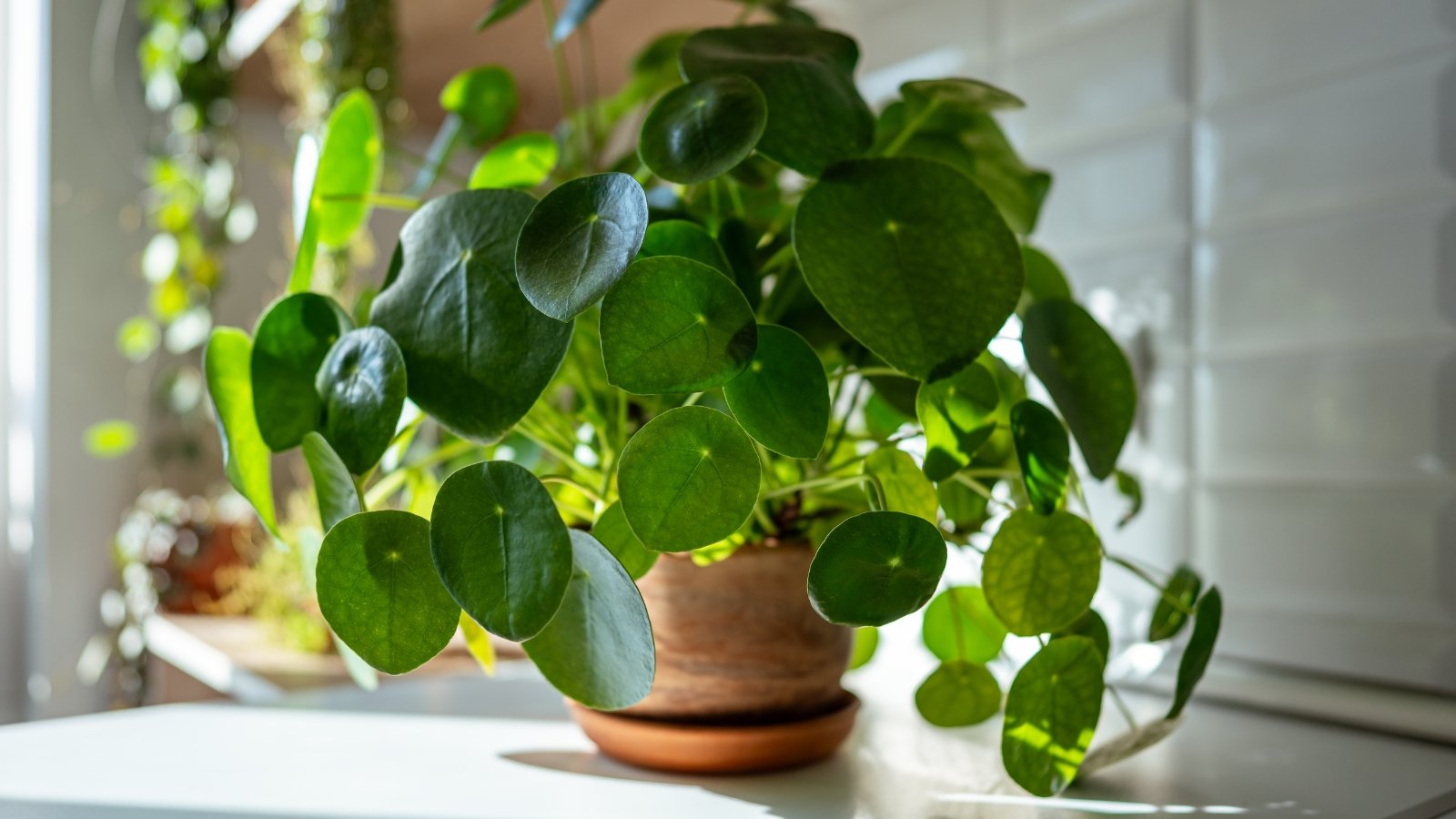
Another Pilea species, the Chinese money plant is an attractive decorative plant with saucer-shaped leaves. It likes the conditions of our homes because it appreciates bright indirect light, and will burn under direct sunlight. It’ll also lose its leaves if there’s too much shade. Houses have ample spots with light that isn’t too dark or bright, creating ideal locations for the Chinese money plant.
Propagate this fleshy houseplant this November by taking advantage of its offsets. Mature specimens produce baby plants that sprout next to their main stems. The offsets develop a root system separate from the main plant—they’ll survive if you pluck them and place them in a new container.
Start by locating offsets with more than three or four leaves. Excavate them from the container, careful not to harm theirs or the main plant’s roots. Transplant them into pots at least six inches deep with fertile, moist soil.
Asparagus Fern
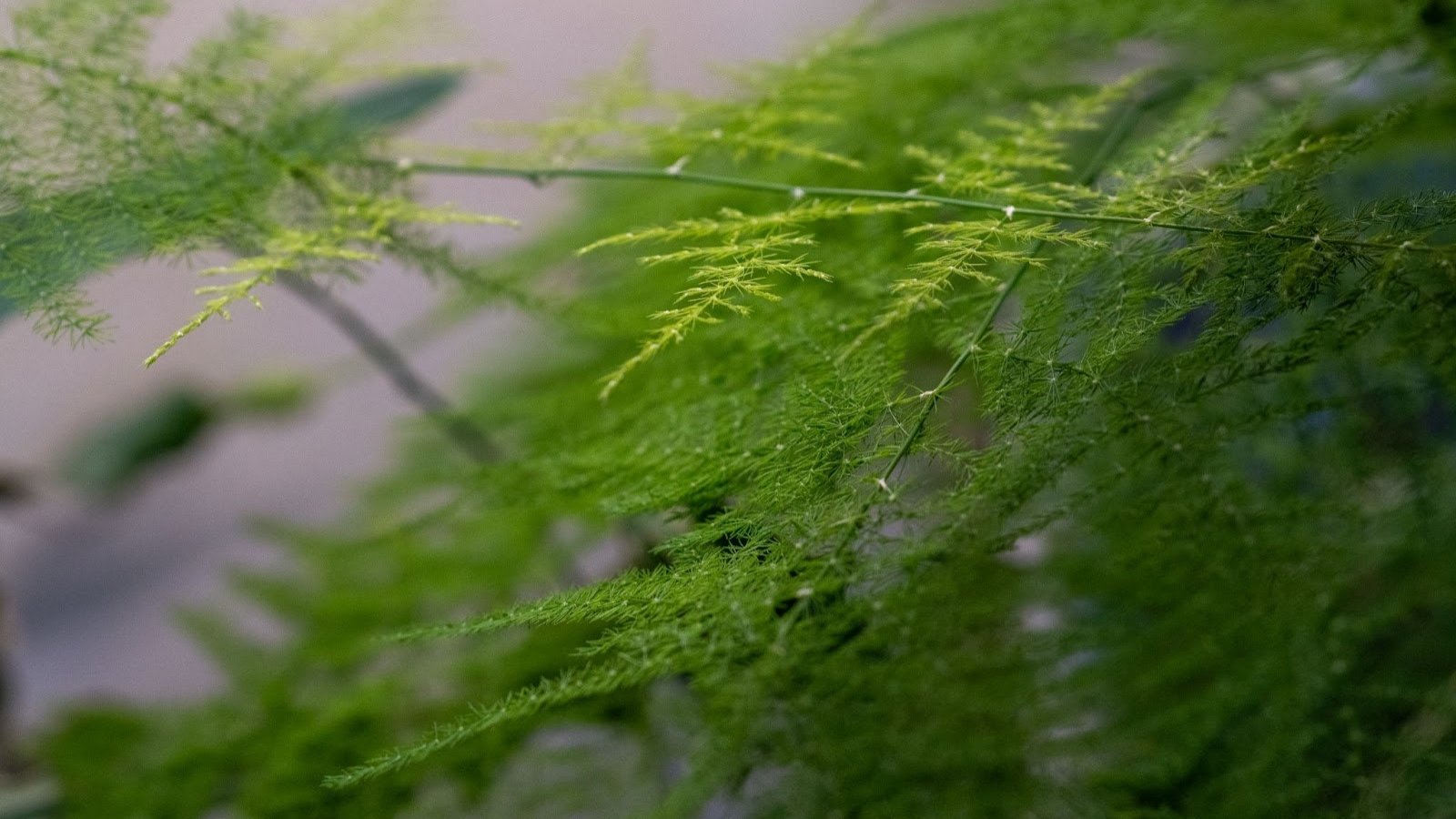
Asparagus fern is in the same genus as culinary asparagus! It’s not edible, but it sends spiky shoots upward that grow lacy fern-like foliage. The fine leaves are a dainty addition to indoor spaces, and happy mature specimens have dozens of stems with these decorative leaves for a gorgeous effect. Although the cut stems won’t form roots, you can use division to propagate asparagus ferns easily.
Divide your mature specimens in November by removing them from their containers. Brush or wash away the soil, then find sprouts with a root system separate from the main plant. You may have to use pruners or a knife to separate the roots carefully so you leave as many intact as possible. Take the separate sprouts and pot them up in new containers with well-draining potting soil.
Asparagus ferns are low-light lovers, although they also appreciate bright, indirect light in our homes. Grant them a location close to a window where they have some direct sunlight and shade. If you notice leaves yellowing and falling off, your plant most likely needs water or more light.
Burro’s Tail
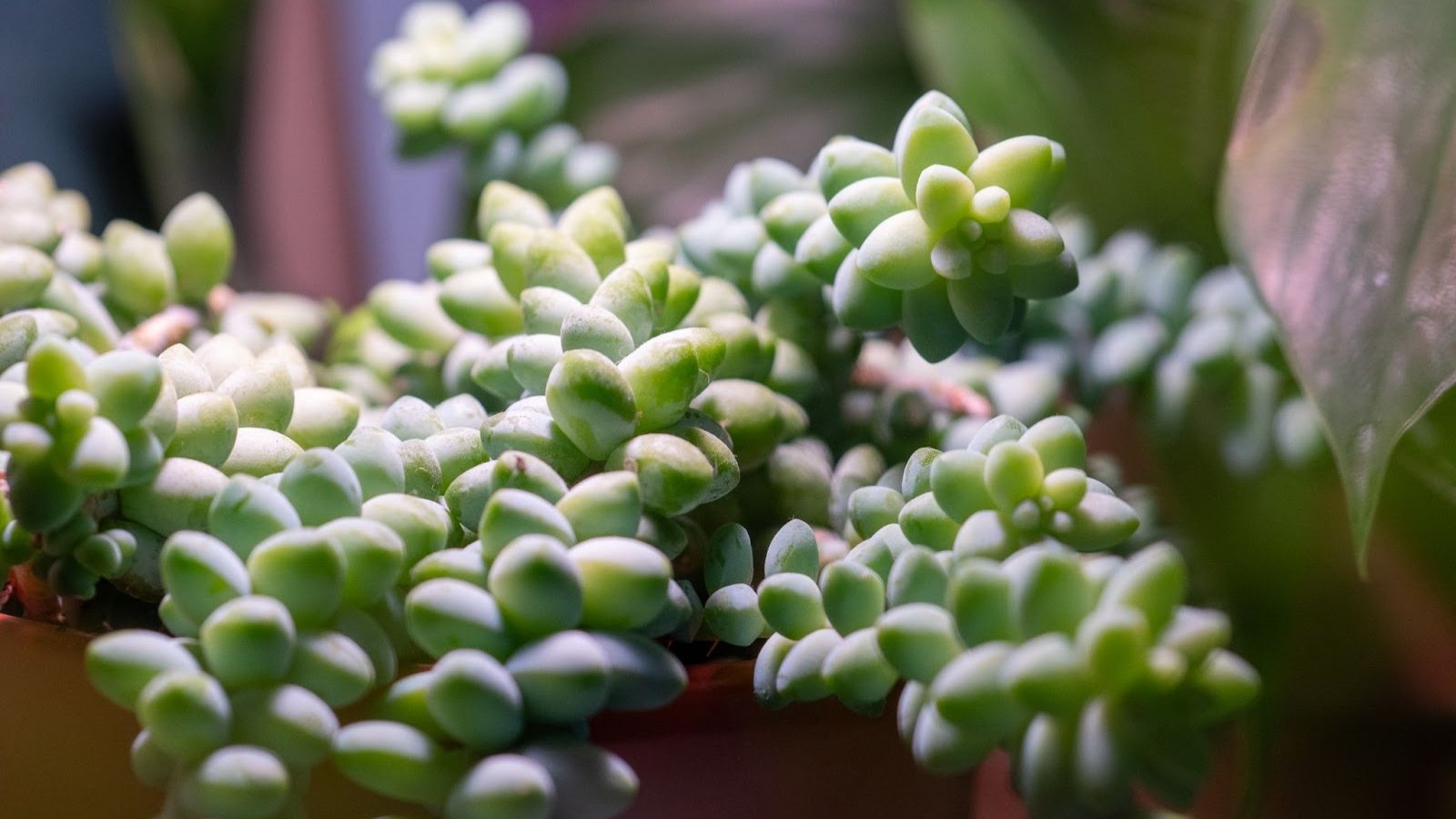
Burro’s tail, or donkey’s tail plant, is a succulent vining species ideal for growers who want to bring desert vibes into their homes. It has bright blue-green pearl-shaped leaves that are juicy and full of flesh. They fall off the stems and sprout clones of the mother plant, making propagation a simple task.
Simply gather some of the fleshy leaves, place them in pots with dirt, and water them well. They’ll need bright light or direct sunshine indoors, as this succulent thrives the more light you give it. If the new sprouts grow leggy with few leaves, move them closer to the sun and prune the leggy stems to encourage more compact growth.
Burro’s tail thrives indoors because it’s frost-tender in zones 9 and below. If you lack ample brightness year-round in your home, you can move your specimen outdoors for the warm months and indoors for the cold ones. Add a grow light to your home during the winter, and your succulent will thrive until spring warmth returns.
Dwarf Umbrella Plant
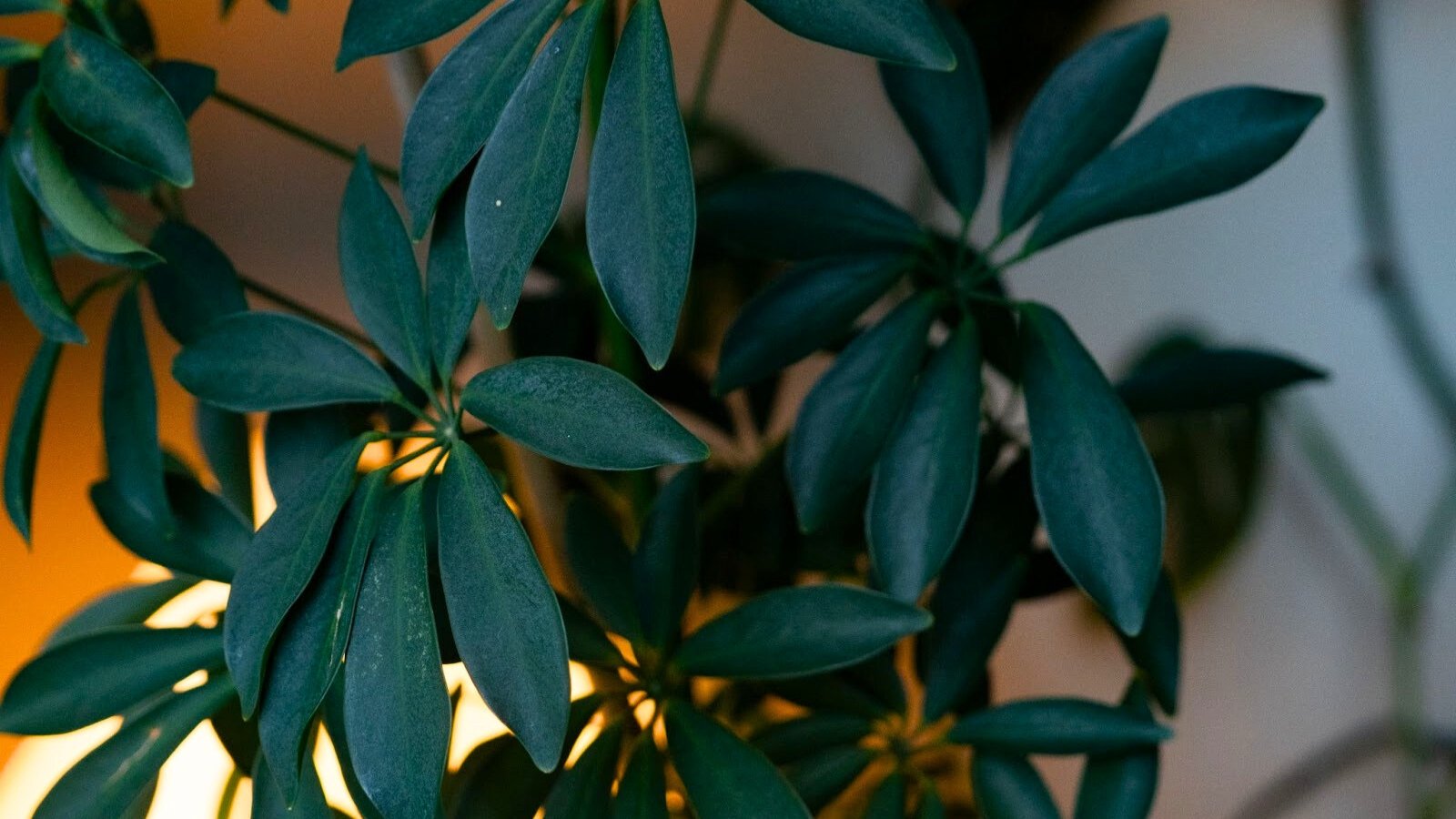
This tall shrub or small tree is perfect for office spaces, houses, and rental properties. It’s low maintenance, loves shady conditions, and requires little water during its lifetime. It roots freely from cuttings; you can use them indoors as bonsai material, or outdoors in warm zones to make a hedge or a standalone specimen.
Propagate dwarf umbrella plants by pruning off stems so they’re six to eight inches long. Ensure they have some leaves at their tips and that they’re green cuttings, not woody ones. Green ones tend to root better than woody specimens. Place the stems in pots with fertile, well-draining soil, and water them well when their soil dries.
Dwarf umbrella plant cuttings need consistent lighting while they root, and they’ll struggle in extremely low-light situations. Grant them grow lights for three to four hours a day, or place them near a window where they’ll receive indirect bright lighting. You may use a curtain or blinds that let filtered light through to filter harsh direct sun rays.
Dwarf Monstera
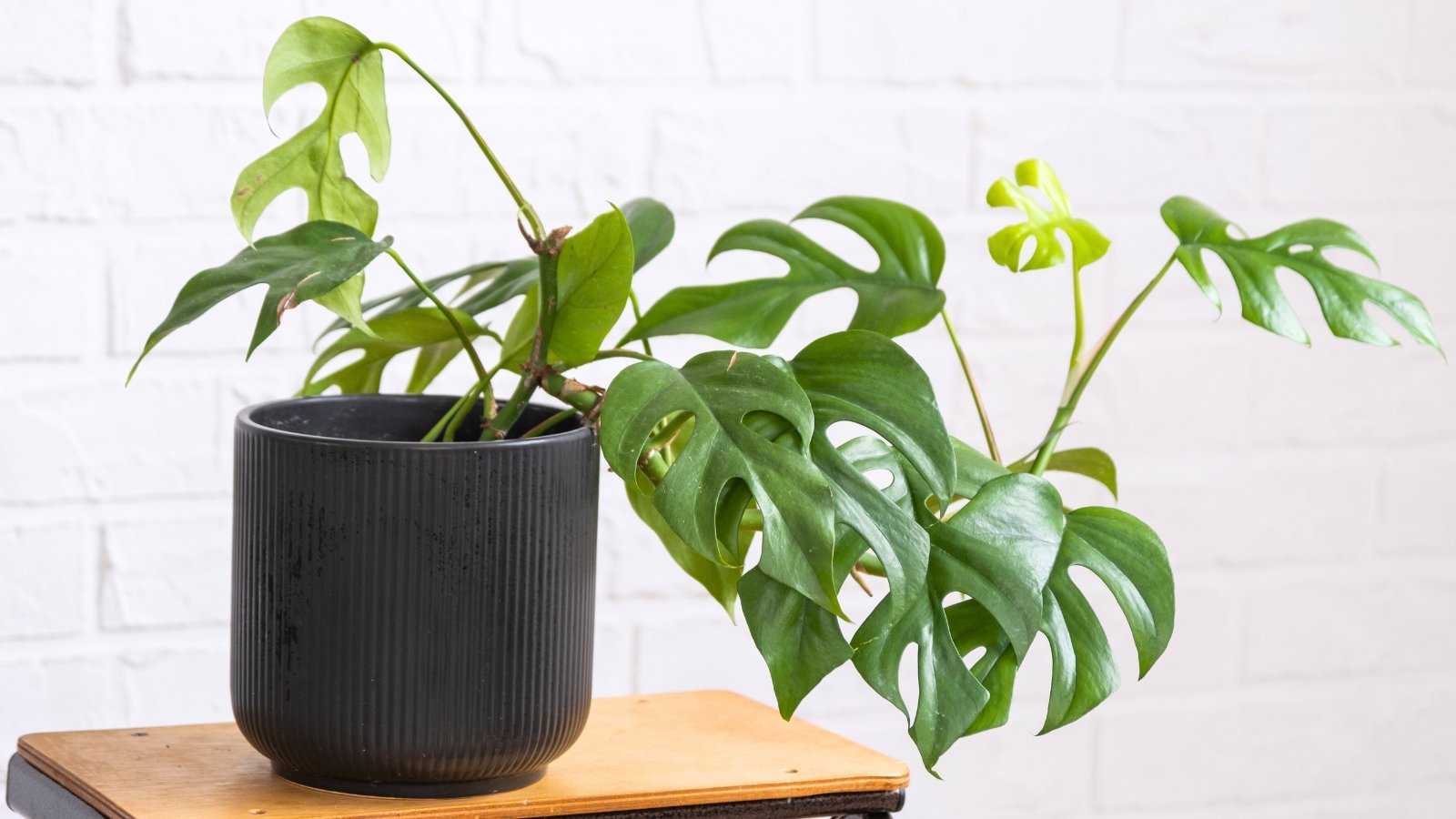
Dwarf monstera isn’t a true Monstera species, it’s actually in a separate genus Rhaphidophora in the same family Araceae. It receives its name because of its leaves that have holes in them, much like Swiss cheese plants. It’s an evergreen-vining tropical species that loves growing indoors. Dwarf monstera creeps along forest floors in its native range before finding tree trunks that it can ramble upwards on.
Like Swiss cheese and pothos plants, you’ll see this species sprouting aerial roots when it’s happy and thriving. They’ll spread into the soil if they touch it or they’ll soak up water and grow in a glass jar. Choose whichever potting medium is easiest for you and your house’s setup.
Propagate dwarf monsteras by placing cuttings with aerial roots in water or soil, and give them between two and six hours of daily direct sunlight. This species is drought tolerant once it establishes itself, but the cuttings need consistent soil moisture while they adapt to their new homes.
Spiderwort
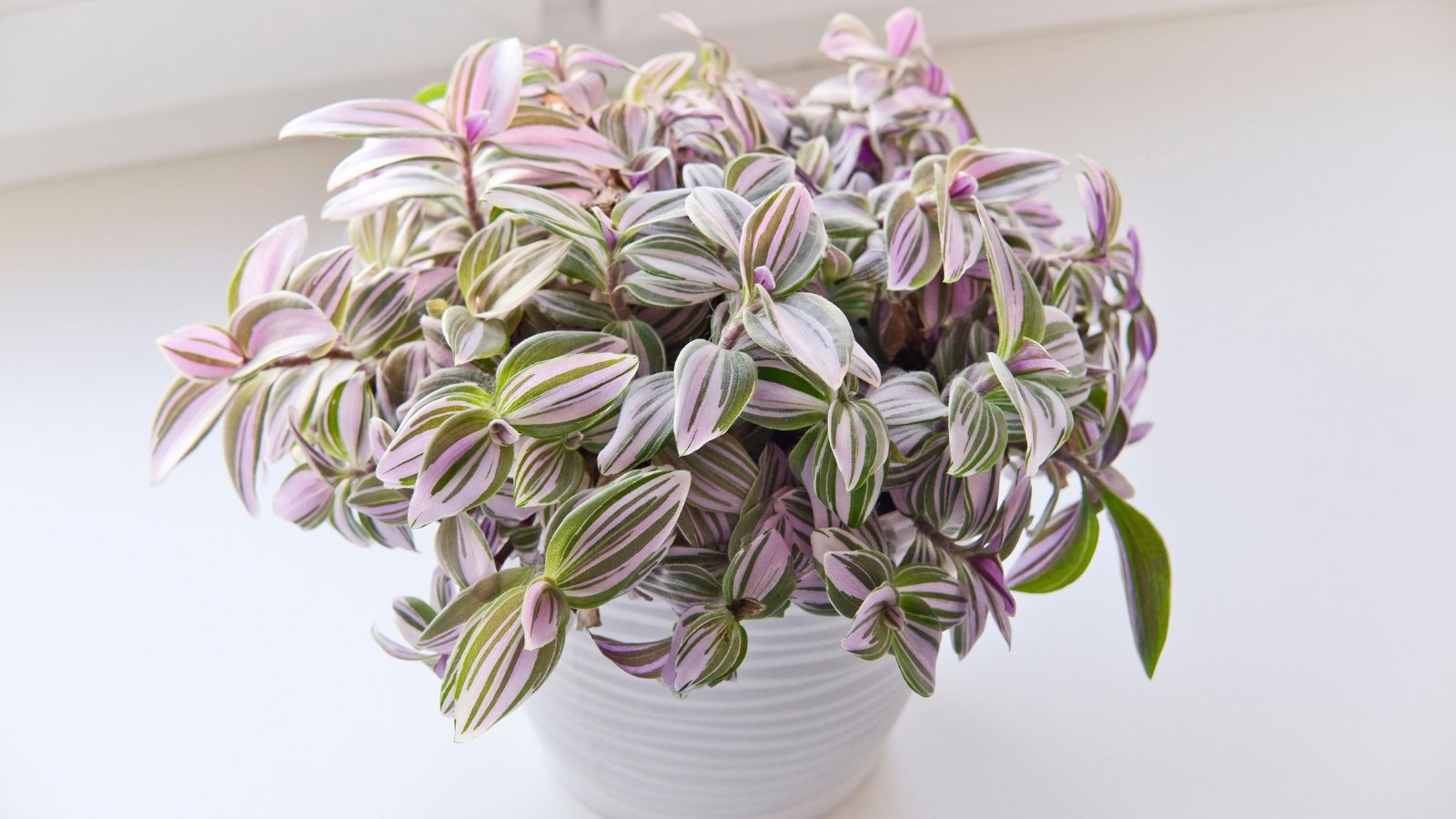
Spiderwort is the common name for dozens of trailing species. Most are native to the Americas, with some originating in the States like Virginia and Ohio spiderwort. Others are warm region lovers with low frost tolerance; they’re ideal houseplants in cold regions. The best spiderworts for our homes are those tropical types that originate in hardiness zones 9 through 12.
Like dwarf monstera and pothos, spiderwort sprouts roots from cuttings in either soil or water. Select stems from a thriving, mature specimen and strip them of their lower leaves. Place them in soil or a glass of water, and give them indirect bright light while they root.
Once you see roots on the cuttings in water, transplant them to a container with fresh potting soil. They won’t survive well in jars of water and may rot out before they grow new leaves. Place your new plant babies in a bright location with indirect sunlight for the best indoor growing results.
Dragon Tree
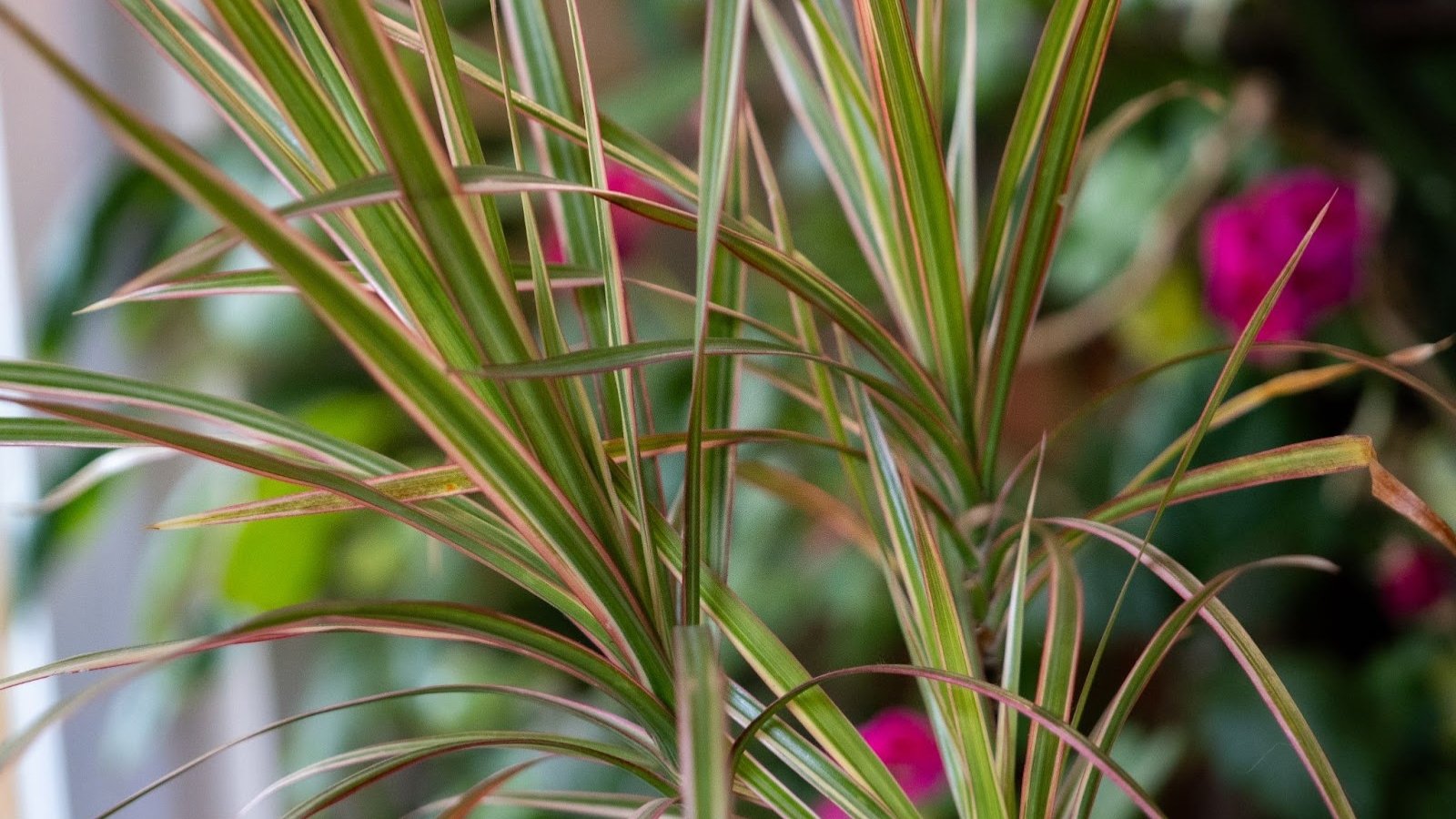
Dragon trees are iconic houseplants! They sprout narrow leaves with variegation that’s different depending on the variety. There are red and green, yellow, and maroon types that add charm wherever they grow in your home. Like the Chinese money plant, this Madagascar native plant requires filtered light without direct sunshine indoors. Their leaves may scorch if there’s too much!
Outdoors, these specimens reach 20 feet or higher, although they’ll stay under six or seven feet in your home. They take well to pruning, and each woody stem you cut off will grow two more in its place. You can help your tree stay bushy and create new cuttings for propagation simultaneously.
Root these cuttings in pots with well-drained soil. Water infrequently so the soil dries, but don’t let it become bone dry. Dragon trees appreciate humidity, and adding a humidifier to your setup helps them root without issues.




